Tour around Mount Emei and Chengdu in October 2020












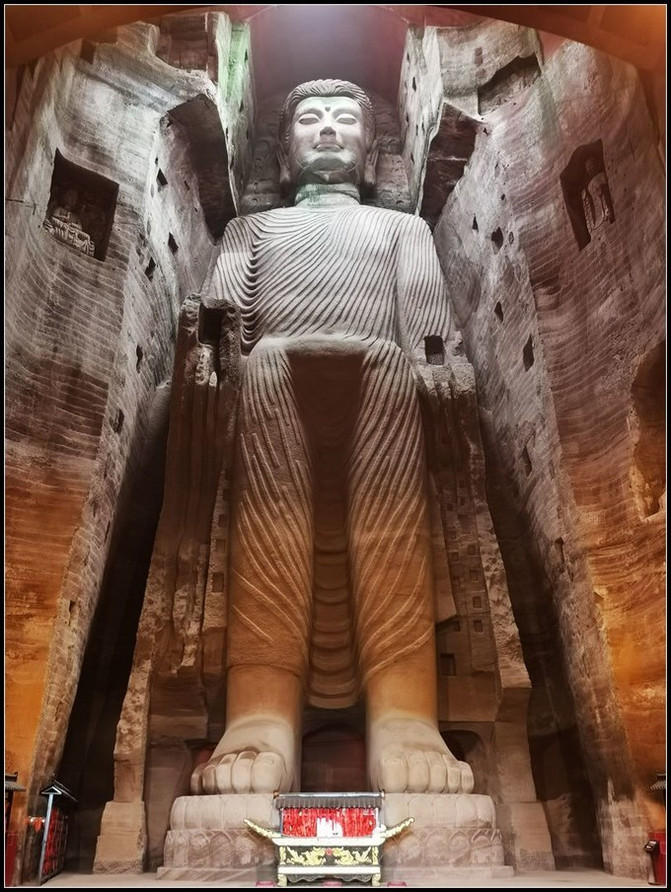






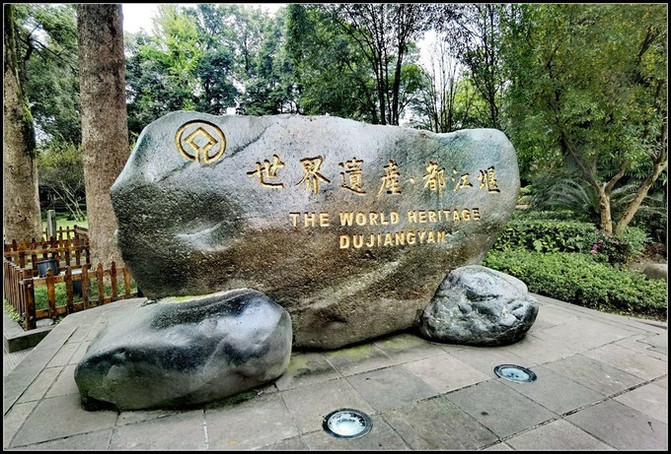
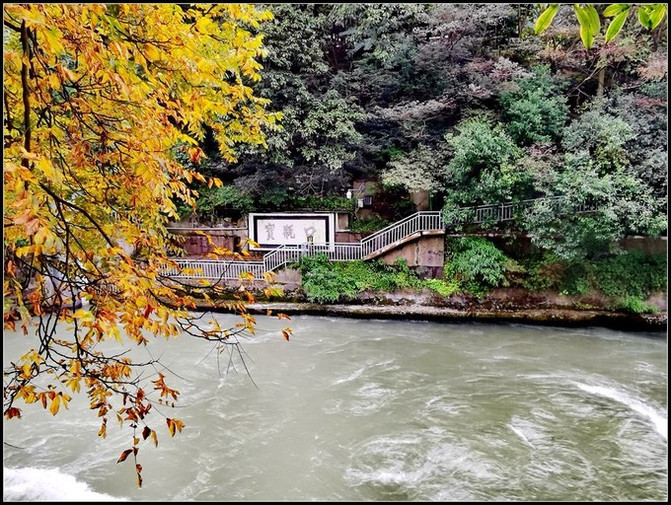










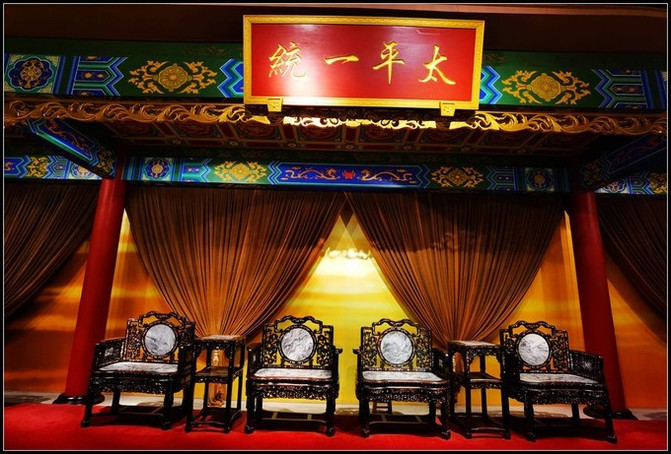



Following our trip to Chengdu in May this year, we went to Chengdu again in the golden autumn of October. The main goal of our trip was to visit Mount Emei, see Dujiangyan, Sanxingdui and Anren Ancient Town, and enjoy Chengdu's comfortable leisure life again.
Day 1: Guangzhou-Chengdu-Emei Mountain
In the morning, take a China Southern Airlines flight to Chengdu. After arriving, you will directly transfer to the high-speed train at Chengdu Shuangliu Airport to Mount Emei. The hotel will be next to the Mount Emei Tourist Passenger Transport Center. Put down your luggage and walk to Baoguo Temple and Fuhu Temple.
Accommodation: City Convenience Inn (Emeishan Branch)

On October 21, we flew to Chengdu, Sichuan on a flight from China Southern Airlines.

After arriving at Chengdu Shuangliu Airport at noon, it is very convenient and convenient to transfer directly at the airport to the train from Chengdu to Emei Mountain.

It took about half an hour to reach Mount Emei by train.

After leaving the station, the hotel we booked sent a car (free of charge) to the station and we picked it up to the hotel. This hotel is in a good location, only 100 meters away from the Emei Mountain Tourist Transportation Center, and the facilities in the hotel rooms are also very good.


We packed our bags and went out. This is the Emei Mountain Tourist Transportation Center. Tickets and tourist tickets for scenic spots are sold here. Starting from 6 a.m. every morning, tourist buses are dispatched to the scenic spots without stopping. When there are few tourists, they depart every punctual and half-point. The latest departure time to the scenic spots is 5 p.m.


Mount Emei is in the southwest of Sichuan Province. It is one of the four famous Buddhist mountains in China. It has steep terrain and beautiful scenery. It is known as the most beautiful place in the world. The Wanfo Ding on the mountain is the highest, with an altitude of 3099 meters. "Emei County Annals" are so dense that they are made up of green and decorated in a distance. They are as beautiful and beautiful as a head and a moth's eyebrows. They are thin and long, beautiful and gorgeous. Therefore, they are named Emei Mountain. Emei Mountain is the temple of Samantabhadra Bodhisattva. Religious culture, especially Buddhist culture, constitute the main body of Emei Mountain's history and culture and is one of China's tourism, recuperation and summer vacation destinations.



Mount Emei is a dual heritage of world culture and nature. The ancient buildings of Mount Emei are national key cultural relics protection units. The Mount Emei Scenic Area, with Mount Emei as the main body, is a national key scenic spot and a national AAAAA tourist attraction.



Emei Martial Arts was formed in Mount Emei, so it got its name after Emei. Due to their similar geographical environment and connected humanities and nature, the styles and characteristics formed by various martial arts schools that have been spread in Bashu (most of the southwest) are very similar in style and characteristics. They are all matched with Emei Martial Arts and formed into a major regional martial arts faction with Mount Emei as the main body-Emei School.

Baoguo Temple is located at the foot of Mount Emei, with an altitude of 551 meters. It is the first temple on Mount Emei and the seat of the Mount Emei Buddhist Association. Baoguo Temple is the center of Buddhist activities in Mount Emei. Among the many temples on Mount Emei, Baoguo Temple is the gateway to the mountain and the starting point for a tour of Mount Emei.

Baoguo Temple is surrounded by nannan trees and surrounded by red walls. The majestic hall is majestic and shining with gold and jade, cigarettes curling, and the sound of chimes is frequently heard. Baoguo Temple sits west to east, welcoming the rising sun in the morning and sending off sunset at night. It faces Fenghuang Castle in front, Fenghuang Ping in back, Fenghuang Lake on left, and Phoenix Pavilion on right. It looks like a beautiful, auspicious golden phoenix that is about to fly in the sun. There is a pair of Ming Dynasty carved stone lions in front of the mountain gate. They are vivid and majestic, like guards on the left and right, guarding this famous mountain and temple. On the mountain gate: The large plaque of "Baoguo Temple" is the imperial inscription of Emperor Kangxi of the Qing Dynasty and the calligraphy of Yufan.

Baoguo Temple is the largest, most famous and influential temple among the many temples in Mount Emei.

A plaque of "Treasure Form Solemnity" hangs in the main hall of Baoguo Temple. The couplet on the pillars on both sides of the mountain gate reads: "Phoenix spreads its wings to the golden watchtower, bells and chimes fall down on the jade steps frequently." It is a vivid description of the scenery around Baoguo Temple, the "golden phoenix". The horizontal plaque "Illuminating the Zen Forest" and "Illuminating the Light" mean the same thing: Buddhism calls Mount Emei "Bright Mountain". During the day, a magical Buddha's light appears, and at night, thousands of sacred lanterns come to worship, and the entire Mount Emei is illuminated by light.

The statue of Maitreya enshrined in the Maitreya Hall. "Maitreya" means mercy. He is a Bodhisattva and has not yet become a Buddha. Bodhisattva is second only to Buddha in Buddhism. Maitreya is called the "Future Buddha". "Laugh when you open your mouth, laugh at the past and the present, smile at everything; you can tolerate a big belly, tolerate heaven and earth, and you can tolerate anything to others." This is an image description of Maitreya Bodhisattva, which inspires people to be open-minded and tolerant of others.


In the Daxiong Hall, a golden and colorful sitting lotus statue of Buddha Lord Sakyamuni is enshrined. The left niche of Shakya Buddha is a painted golden statue of Manjusri Bodhi. Manjusri's full name is "Manjusri's teacher benefit", which means wonderful virtue and auspicious. He is the head of all Bodhisattva and the embodiment of wisdom. Together with Samantabhadra Bodhisattva, he serves as the right and left side of Sakyamuni Buddha. The right niche is a golden sitting lotus statue of Ksitigarbha Bodhisattva. The left and right compartments of the hall are dedicated to eighteen Arhats. Arhats are enlightened disciples of Buddha, and the Eighteen Arhats are accompanying disciples of Sakyamuni Buddha. The Buddha statue of Amitabha in the back niche, Amitabha, also known as the "Guiding Buddha" and the "Infinite Longevity Buddha", is the founder of the Western Paradise.



There are seven Buddhas enshrined in the Seven Buddha Hall. One in the middle is Sakyamuni Buddha, and the other six are past Buddhas. From right to left, they are: Nanwu Detention Sun Buddha, Nanwu Junahanmuni Buddha, Nanwu Kasya Buddha, Nanwu Visha Buddha, Nanwu Corpse Abandoned Buddha, and Nanwu Viva Corpse Buddha. The shaping process of these seven Buddhas is called "yarn stripping shaping".

The statue of Samantabhadan Bodhisattva is enshrined in the Temple of Samantabhadan. Samantabhadra is Sanskrit "Sanmandovata", which means universal virtue. Because of this, Samantaban extensively cultivated the "Ten Great Vows", also known as the "Great Vows King". "Wish" is an ideal, and "action" is practice. Mount Emei is the Taoist temple of Samantabhadra, so he was dedicated to the last hall. It is written on the door of the temple,"The golden millet is solemn and the Bodhisattva's dwelling place; the epiphyllum shines brightly on the love of the child." It means that the palace decorated with golden yellow is the residence of Samantabhadra Bodhisattva; the brilliant brilliance of the Youzhu flower shines through the Zen monk's love for Buddha.

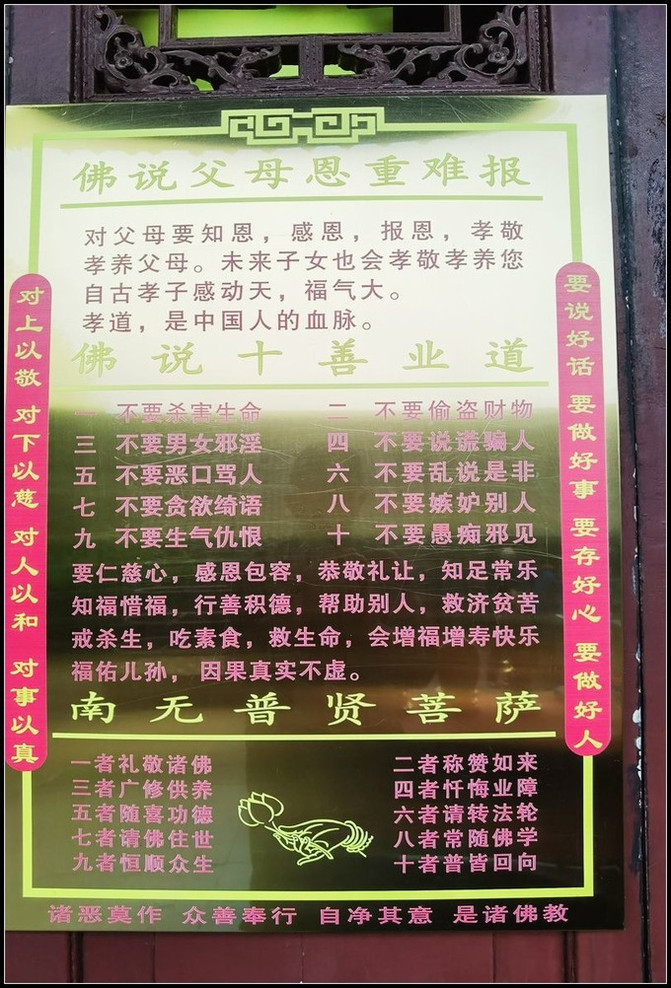









The gate of Fuhu Temple. Fuhu Temple, also known as Fuhu Temple, Shenlong Hall, and Huxi Jingshe, is adjacent to Baoguo Temple. Fuhu Temple was a small temple in the Jin Dynasty. It was rebuilt by Zen Master Yun 'an in the Tang Dynasty, with Dragon God Hall and Medicine Master Hall next to it. In the Song Dynasty, it was Shenlong Hall, which was destroyed in the Ming Dynasty. It was rebuilt in the eighth year of Shunzhi in the Qing Dynasty and renamed Huxi Jingshe. Due to the nearby tiger disaster, the temple monks built Zunsheng Building to suppress it and renamed Fuhu Temple.


The entire temple of Fuhu Temple is hidden in a dense forest, so it is known as hiding tigers in the dense forest. After entering the gate of Fuhu Temple, you will cross three Tiger Bath Bridge, Tiger Xi Bridge and Tiger Xiao Bridge with wind and rain bridge-like structures in succession. The flowing water is gurgling, the trees are green, and the environment is very elegant and beautiful.


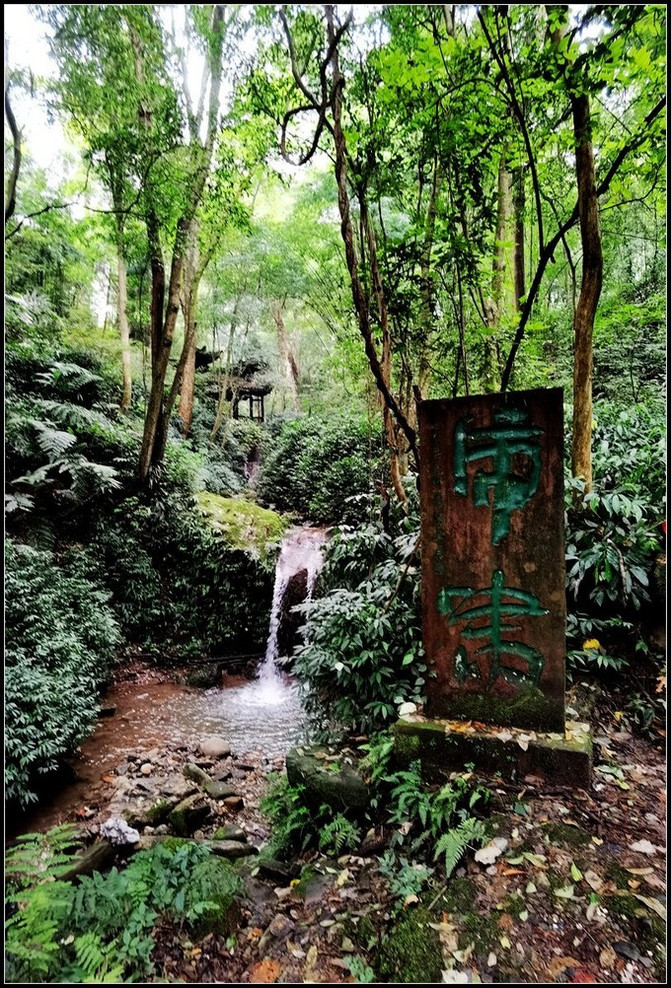






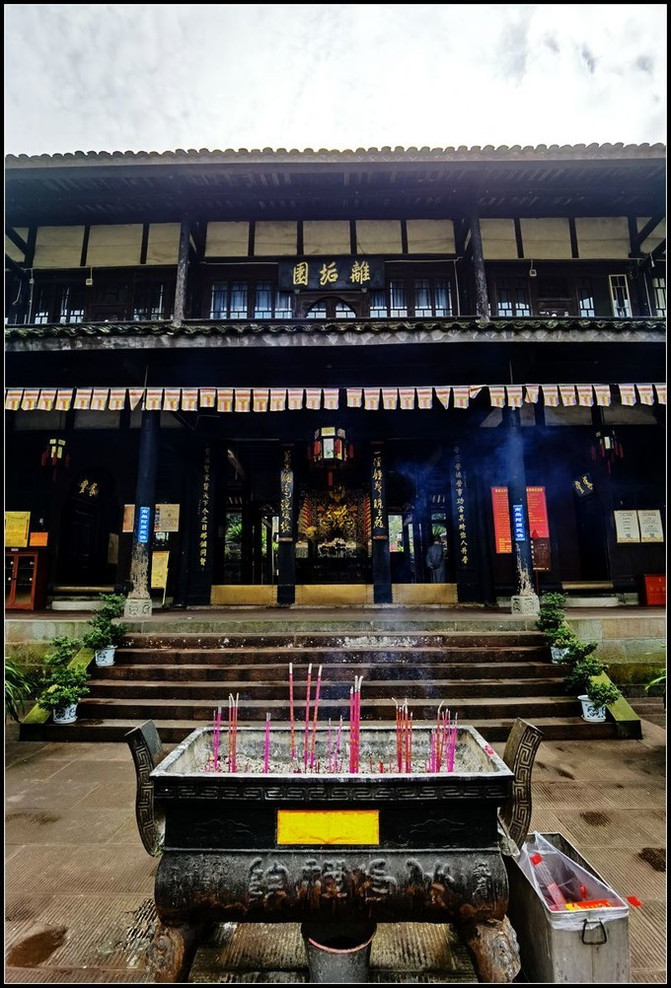
The ancient temples and temples of Fuhu Temple overlap, skillfully forming the extra-large courtyards of the Sihe Courtyard. The surrounding areas are surrounded by green mountains and beautiful waters. The air currents of the four seasons swirl repeatedly. They look like tornadoes, winds and clouds. Even animals, birds and insects can hardly have a place to stand on the roof, let alone trees and leaves. When Kangxi Xuanye learned of this magical event, he presented a book with the title of Licou Garden, a thousand-year-old temple, as a sign of admiration for the Buddhist holy land of Mount Emei.

The three characters on the plaque of Ligou Garden in Fuhu Temple were personally written by Emperor Kangxi of the Qing Dynasty when he came. Looking from Ligou Garden on the roofs around the courtyard, there are no dead branches and leaves all year round. The entire temple is dust-free and is regarded as a miracle by the world, so it is called Ligou Garden.


Fuhu Temple is the largest bhikshuni temple in Mount Emei. These female nuns are chanting scriptures and homework in the main hall.



Huayan Pagoda in Fuhu Temple. This tower was forged in the 13th year of Wanli of the Ming Dynasty. The Huayan Pagoda is the temple treasure of Fuhu Temple and the most copper pagoda in China. Such a beautiful and huge copper tower was cast nearly eight hundred years ago, and it was completed in one go. The tower body does not show any signs of splicing. The tower body has an eight-sided shape and a height of 5.8 meters. It is a 13-level pavilions-style steel tower. The foundation of the tower is a Sumizuo, with a thin and slender complex bowl tower body on it, 96 centimeters high. There is a tower door on the front. The forehead is cast with the official calligraphy Yangwen Nanwu Amitabha Huayan Pagoda. The two sides are connected with the emperor's paintings to consolidate. The emperor's path is prosperous, the weather and rain are smooth, the country is peaceful and the people are peaceful, the Buddha's sun is increasing, the Dharma world is affectionate, and the pure land is born together. Each statue of the god guarding the door is cast next to the couplet. Six rows of statues were cast on the other seven sides. It is connected to thirteen levels of octagonal heavy trough pavilions, with more than 4700 Buddha statues at all levels. The "Hua Yan Sutra" is cast among the Buddha statues. The pagoda is in the shape of a gourd. This tower is exquisitely cast and has high artistic value.



The place where we live in the hotel is the central passenger transportation area of Baoguo Temple. The front of this large archway is mentioned by Guo Moruo as "Famous Mountains in the World", and the other side is mentioned by Zhao Puchu as "Buddhist Holy Land".
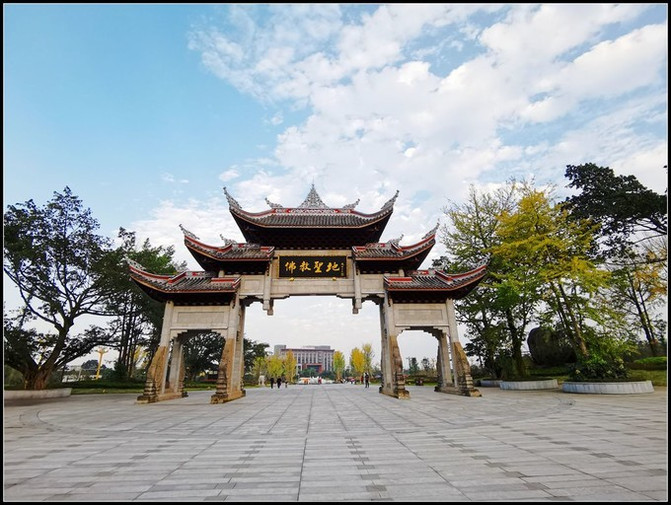





In the evening, we found a random restaurant nearby and tasted Sichuan's famous "Crooked Beef".

Hot waist flower
Day 2: Mount Emei
Today's itinerary is to go up the mountain. After breakfast, walk to the Emei Mountain Tourist Passenger Transport Center, take the sightseeing bus to Leidongping, and then take the cable car to Jinding for sightseeing. I wanted to visit a few more places, but the fog on Emei Mountain began to rise in the afternoon. After calculating the time, I only visited Jinding here, which took about 7 hours back and forth. I might as well go down the mountain and go back early to rest.
Accommodation: City Convenience Inn (Emeishan Branch)

After breakfast, walk to the Emei Mountain Tourist Passenger Transport Center, which is about 100 meters away, and buy a return ticket for the sightseeing bus (90 yuan/person) and a round-trip cable ticket from Leidongping to Jinding (120 yuan/person). People over 60 years old are exempted from entering the mountains with their ID cards. Tourist buses are said to depart every half hour, but in fact, passengers leave one bus every time they are full, and sometimes even depart one bus after another continuously.

The bus drives along the winding mountain highway in the Emei Mountain Scenic Area for about two hours to arrive at Dianlei Dongping Station. Leidongping is 2430 meters above sea level. This is the only place to go to Jinding. There are many tourist hotels and inns in Leidongping, which is the starting point for three different tourist buses.
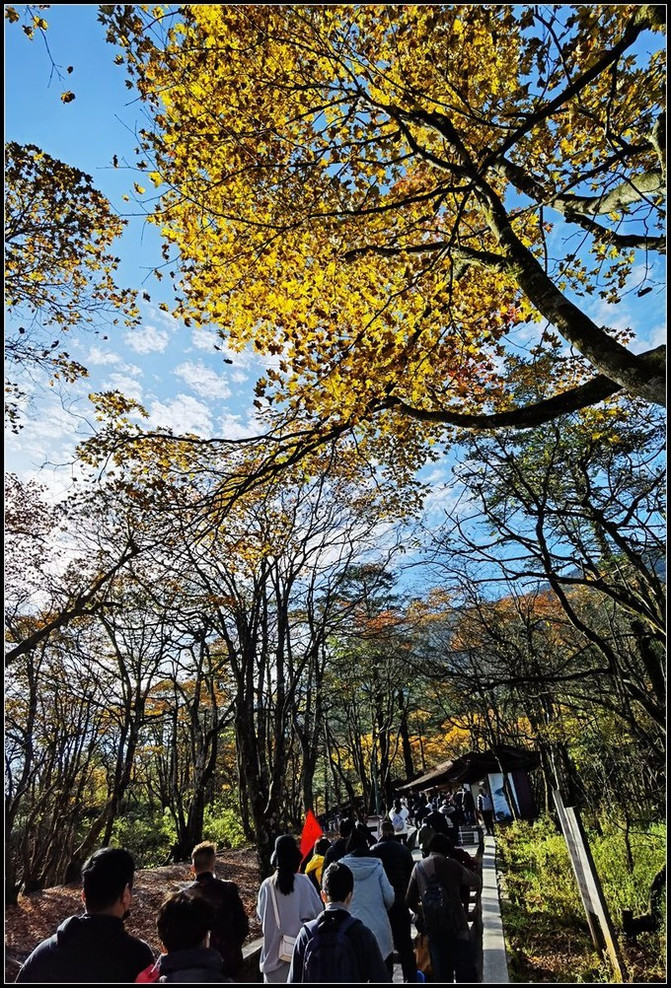
After getting off at Leidongping, you need to walk about 1.5 kilometers along the mountain road to reach Jieyin Temple Cable Car Station. In late autumn, Mount Emei has a pleasant climate, fresh air and charming scenery.

A slide pole sedan chair carrier is resting on the roadside and soliciting passengers. The Emei Mountain slide pole is a means of transportation for tourists. It not only reduces the fatigue of mountain climbing for tourists, but also adds a beautiful scenery to the fairy mountain. As the number of tourists on Mount Emei increases year by year, in order to meet the needs of tourists, pole teams have emerged. There is now a pole pole team of 1000 people. Divide into two classes on a single and even basis, with uniform dress, segmented management, clear price tags, clear certificates for operation, and civilized services. At the same time, the sliding pole has also been improved. Change the arc-shaped bamboo raft to a four-legged couch shape. It is beautiful in shape and comfortable to sit and lie down.


The way from Leidongping to the cable car station will pass through the country's largest alpine rhododendron reserve. This is also the activity site of this Emei Mountain monkey, but we didn't see even a monkey hair that day.



When you arrive at Jieyin Temple, you will arrive at the cable car station for climbing the Golden Top.


The day we arrived was not a holiday, but due to the good weather, there were still quite a few tourists. We waited in line at the cable car station for more than 20 minutes before getting on the cable car.

We were so lucky. A few days before we came to Mount Emei, there were two consecutive heavy snowfalls on Mount Emei. The snow on the mountain was very thick. The weather cleared up on the day we climbed, and the snow began to melt.



Snowman piled up by snow in the scenic area.

The gate of the Golden Summit of Mount Emei.

The six-toothed white elephant is the mount of Samantabhadra Bodhisattva.

The Jinding of Mount Emei is the place with the most concentrated temples and scenic spots in Mount Emei. It is crowded with scenic spots and is the essence of Emei. In 1983, it was listed as a national key Buddhist temple. Climbing the Jinding is the greatest wish of all tourists and pilgrims to visit Emei and worship Samantabhadra. Here, people can not only burn incense and worship Buddha and linger in the world of gods, but also appreciate the magical landscapes of nature: sunrise, sea of clouds, Buddha's light and magic lanterns.


Jinding used to have a total of 548 temples and cottages, large and small, which could accommodate thousands of people to eat at the same time. It is the largest building complex in the whole mountain. But a decade of turmoil caused severe damage to it. What was even more serious was a fire in April 1972. The ruthless fire destroyed all Jinding and Huazang Temple. In 1986, the People's Government of Sichuan Province allocated special funds for reconstruction. After four years of intensive construction, it was completed in 1989. The newly built Jinding Huazang Temple has a construction area of more than 1690 square meters. The entire building is connected by three layers: high, medium and low. It is divided into Golden Hall (Puxian Hall), Daxiong Hall, Maitreya Hall, Ancestral Hall, Abbot Room, Zen Hall and Liao Room. The layout is reasonable and orderly, with red walls and yellow tiles, white jade railings and marble floors basically maintaining the original pattern. The newly built Huazang Temple is majestic and magnificent. It stands on the top of the Golden Peak of Mount Emei at an altitude of 3077 meters, adding more beauty to Mount Emei.

Jinding Square stands with a splendid 48-meter-high and ten-sided bronze statue of Samantabhadra Bodhisattva. It is worshipped by virtuous men and women, with strong incense and smoke lingering around it.

We are really very lucky. According to local people, the Jinding of Mount Emei is sunny on average only four or five days a month, and the rest of the time is cloudy. We had a sunny day today, the sun was shining brightly, and there were even wonders of clouds of clouds halfway up the mountain.

Samantabhadra Bodhisattva is one of the four major Bodhisattva in Chinese Buddhism. It symbolizes virtue and virtue. It corresponds to Manjusri Bodhisattva, which symbolizes wisdom and righteousness. It is both the left and right side attendants of Sakyamuni Buddha. In addition, Virochana Tathagata, Manjusri Bodhisattva, and Samantabhadra Bodhisattva are respectfully called the "Three Sages of Huayan". Samantabha Bodhisattva's carriage is a six-toothed white elephant.



Located in Jinding, enjoy the spectacular and beautiful sea of clouds.



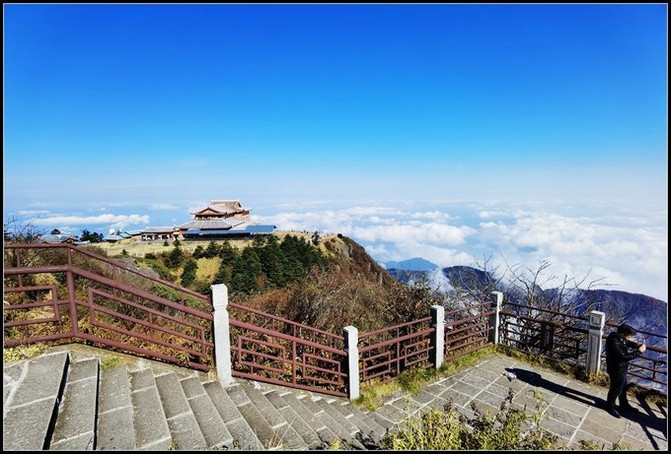


















The Huazang Temple located in Jinding is built along the mountain, with three halls distributed from low to high on the central axis. The first hall is the Maitreya Hall. The gold plaque of Huazang Temple inscribed by Mr. Zhao Puchu hangs on the door of the temple.

In the middle of the door of the Daxiong Hall is a plaque of the Daxiong Hall with gold characters on a black background, with plaques on both sides such as the Holy Land of the King of Wish; the First Meeting of Lingshan Mountain, the Silver World, and the Double Light of the Buddhist Universe. In the hall is enshrined a three-body Buddha with a bronze golden body, which sits 3 meters high. There are also Buddhist relics such as copper pans and copper bells in the hall, as well as bronze cast statues and bronze statues of Saman.


Jinding is the highest hall on Mount Emei. It is also the Temple of the Samannah, that is, the Golden Hall, and the plaque at the door of the temple has a golden roof, endless wishes, the Sea of Samannah's wishes, and the solemnity of the Huazang.


The bronze statue of Samantabhadra Bodhisattva riding an elephant is enshrined in the Jinding Samantabhadra Hall. Samantabhadra Bodhisattva sits on a lotus platform with a Ruyi in his hand. The lotus platform is placed on the elephant's back, and the white elephant steps on four lotus flowers. The entire statue is cast in copper and is 4.5 meters high.
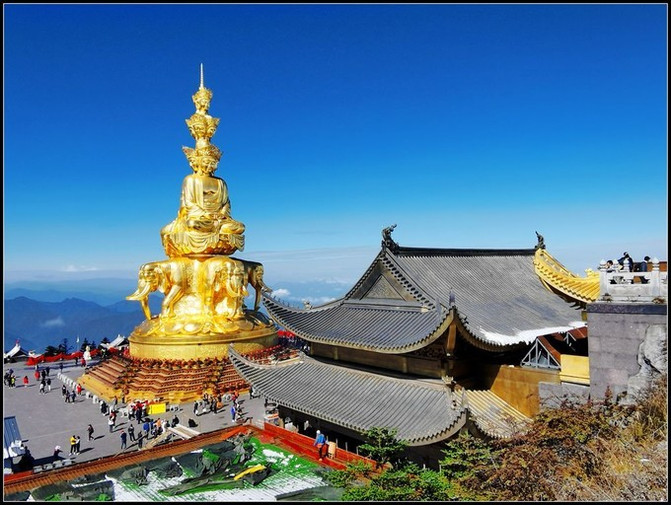
The area of the Jinding is not very large. It takes two hours to play slowly and take photos.

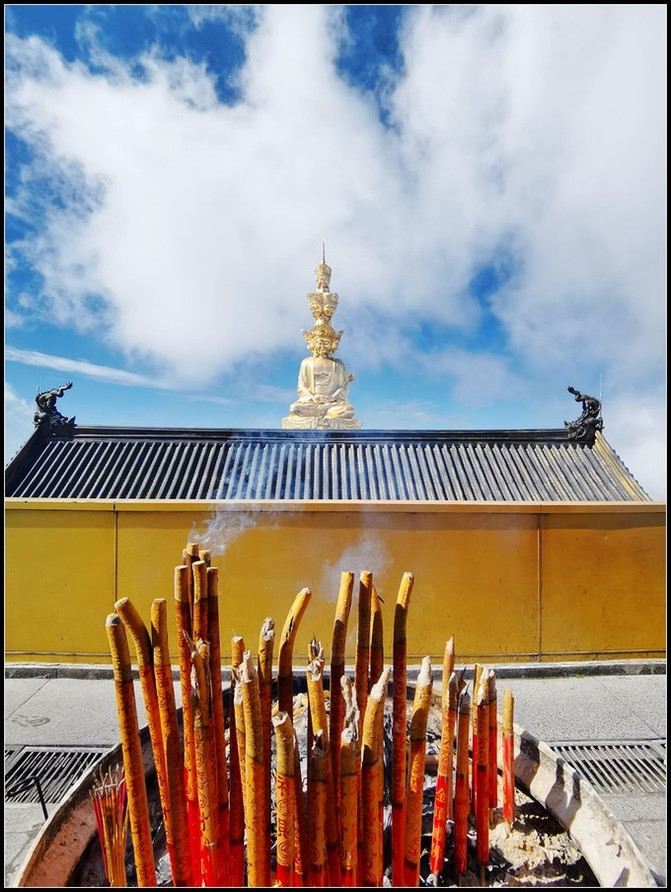








The national benchmark climate station located on the top of the Golden Summit.

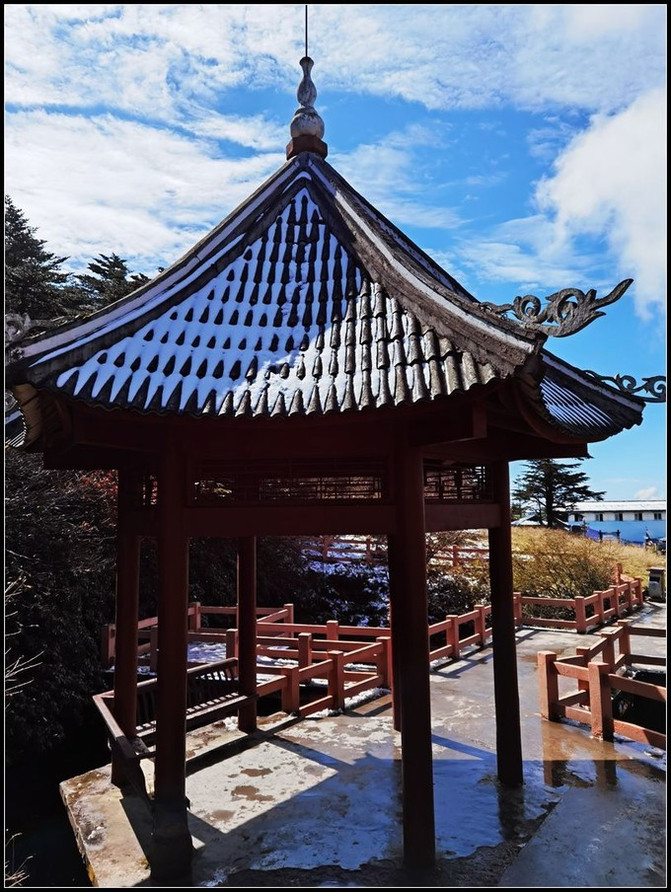
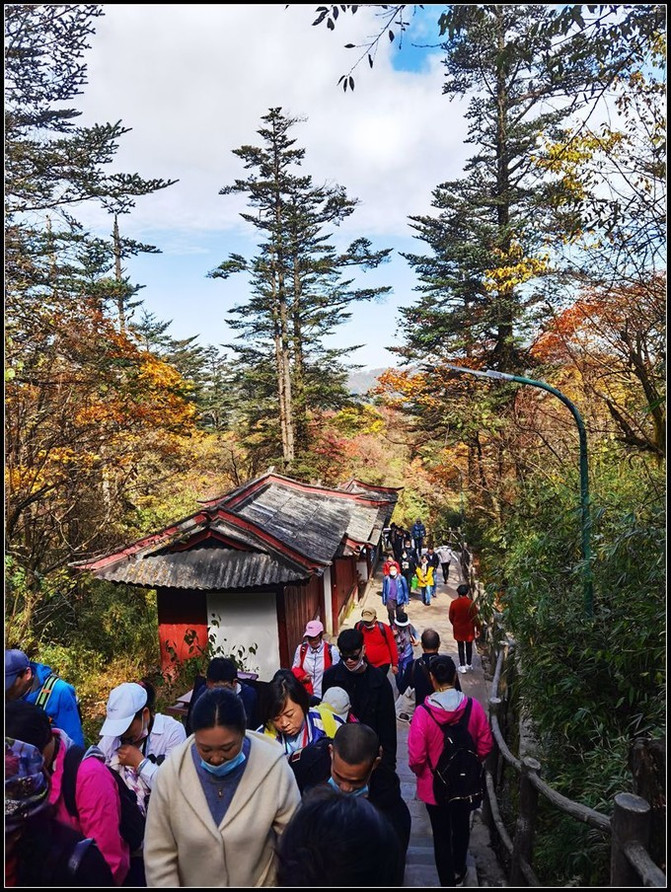
After visiting Jinding, we walked to the cable car station and took the cable car down to Leidongping. In Leidongping, in addition to sightseeing buses that return the same way, there are also sightseeing buses that return to Jingwannian Temple or Qingyin Pavilion. We felt that we had almost seen the Golden Roof and were very tired, so we decided to return to the hotel to rest.


Enjoy a delicious Sichuan meal with kidney flower, blood curd, bean pudding, and fat sausage.


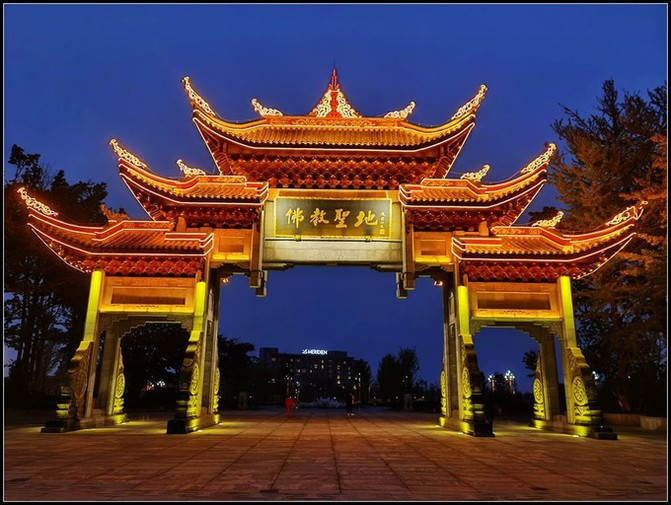

Yesterday, I found that there is a No. 601 bus next to the hotel. The fare is 5 yuan. It can go directly to the entrance of the Leshan Giant Buddha Scenic Area. I thought of going to Leshan to have a trip again. In the morning, I would take the No. 601 bus directly to the entrance of the Oriental Buddha Capital in Leshan City. I planned to visit the Oriental Buddha Capital first and then the Giant Buddha. Unexpectedly, after touring the Oriental Buddha Capital, we reached the entrance of the Giant Buddha. However, we were from Guangzhou and were not allowed to visit, so we decided to go directly to Chengdu.
Accommodation: Mingyu Shangya Food Hotel

After breakfast, take Bus No. 601 next to the hotel. The fare is 5 yuan. It takes about one and a half hours to drive directly to the entrance of the Oriental Buddha Capital Scenic Spot in Leshan City. Leave your luggage in the scenic area and start your tour.

Oriental Buddha Capital is a national 4A-level tourist attraction. Together with the Leshan Giant Buddha, it is at the Nine Peak of Lingyun in Leshan City, within the scope of the world's "double heritage." It governs an area of nearly a thousand acres of forest land and is only a few hundred meters away from the Leshan Giant Buddha. It is an extension of the Buddhist culture of the Leshan Giant Buddha tourist attraction. The Oriental Buddha Capital Scenic Area governs the four peaks of Lingyun and the nine peaks of Lingyun. During the Tang Dynasty,"each peak had a temple""" Elephant Pavilion ", which was later destroyed in the Yuan and Ming Dynasties. The Oriental Buddha Capital was built in 1989 and completed in 1994 with the purpose of restoring the style of the Tang Dynasty. In the Tang Dynasty,"each peak had a temple", but the anti-Yuan war destroyed the temples at the four peaks. Today's Oriental Buddha Capital has restored its old appearance based on historical sites, retaining the original mountain and forest style of the Tang Dynasty. It relies on the mountains, is scattered in high and low, hidden in the forest, and hundreds of caves in the cave.

A giant reclining Buddha with a total length of 170 meters. The reclining Buddha is based on the Dazu stone carvings, taking advantage of the mountain, and taking advantage of the extension of the natural mountain. The south end is engraved with a head and the north end is engraved with feet. Natural mountain vegetation is preserved in the middle, just like a bed of green covered with peaceful and peaceful nirvana Buddha. The head of the Buddha statue is 24 meters long, 32.7 meters wide, and the mouth is 4.5 meters wide. There are 115 hair buns, each of which is 1 meter in diameter and 10.2 meters wide on the instep. There are two dragons playing with beads above the head. This Buddha's eyes are close, his expression is calm, and he lies sideways, which is reminiscent.

The head and chest of the giant reclining Buddha.




Exquisite cliff statues, which is a statue technique of carving Buddha directly on the original cliff. With Buddhist stories as the core and various factors of different eras and cultures as constituent elements, the inheritance and innovation of ancient Buddhist statue art have been realized.

Underground palace of Buddhist art. The cave is surrounded by smoke and is magnificent, like entering a fairyland. The underground palace is an important attraction in the Oriental Buddha Capital








The Wanfo Cave is the core attraction of the Oriental Buddha Capital. The cave is dug against the mountain and has a grand momentum. The Buddha statues in the cave are built on the original stone of the entire mountain according to the traditional techniques of the ancients. They are both divine and shaped and lifelike. The Ten Thousand Buddha Cave fills the gap in the Leshan Giant Buddha's Grottoes and contains Bodhisattva, Arhat and Buddha statues from all over the world. It can be called the fifth largest grotto group in China.




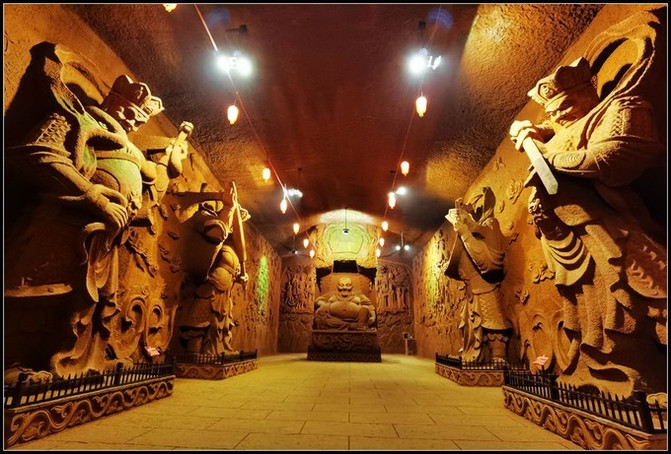



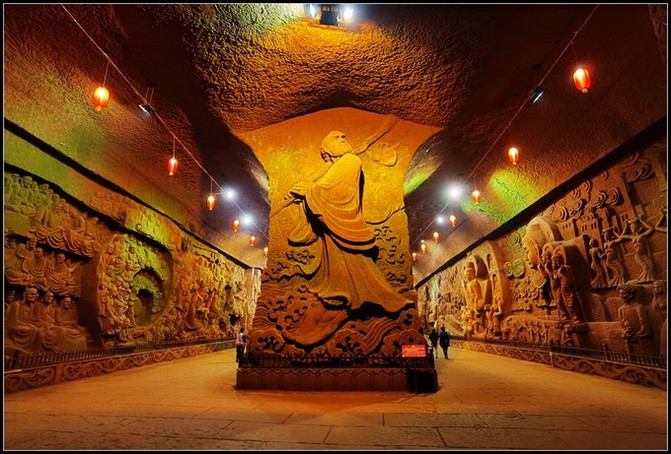












The Demon Subduing Pool is also known as the Buddha Descending Witch. The content shows that before Sakyamuni became a Buddha, he was stopped by the Demon King, and the Demon King Boxun sent three demon girls to seduce him. The Buddha is empty and does not look sideways.


After visiting the Oriental Buddha Capital, we strolled excitedly to the entrance of the Leshan Giant Buddha hundreds of meters away, preparing to visit the Giant Buddha again. However, I didn't expect that at the entrance of the Buddha Buddha, we would be stopped outside the door because we were tourists from Guangzhou. The reason given was that there was an epidemic in Guangzhou. Their superiors issued a notice that Guangzhou tourists were not allowed to enter, even if there was a health green code. We also visited Mount Emei yesterday. We also asked about Dujiangyan, Sanxingdui and other scenic spots, but we did not receive any notice that Guangzhou tourists were not allowed to visit. It seems that only the local policy here at the Leshan Giant Buddha discriminates against Guangzhou people! It really makes us depressed, it cools from head to toe!


Being angry at the Leshan Giant Buddha also made us lose interest in Leshan, so we decided to go to Chengdu. Unexpectedly, after arriving at Leshan High-speed Railway Station, all the tickets for so many bullet trains from 2 p.m. to 7 p.m. were sold out. In desperation, I had to go to the passenger station not far from the high-speed railway station, buy a bus ticket, and take the bus to Chengdu.


Take the subway from Huayang Passenger Transport Center to our hotel. This five-star hotel has a good location and convenient travel. We booked it in June. At that time, due to the epidemic, the hotel industry cut prices significantly to attract customers, so it was very cheap.



Dinner: Mom's hoof flower, hot waist flower.
Day 4: Chengdu--Dujiangyan--Chengdu
After breakfast at the hotel, take the subway to Kuanzhai Alley, take the Chengdu Scenic Area Direct Train at 10:40 to visit Dujiangyan, and take the bus back to Chengdu at 16:30.
Accommodation: Mingyu Shangya Food Hotel

The buffet breakfast in a five-star hotel is quite rich.

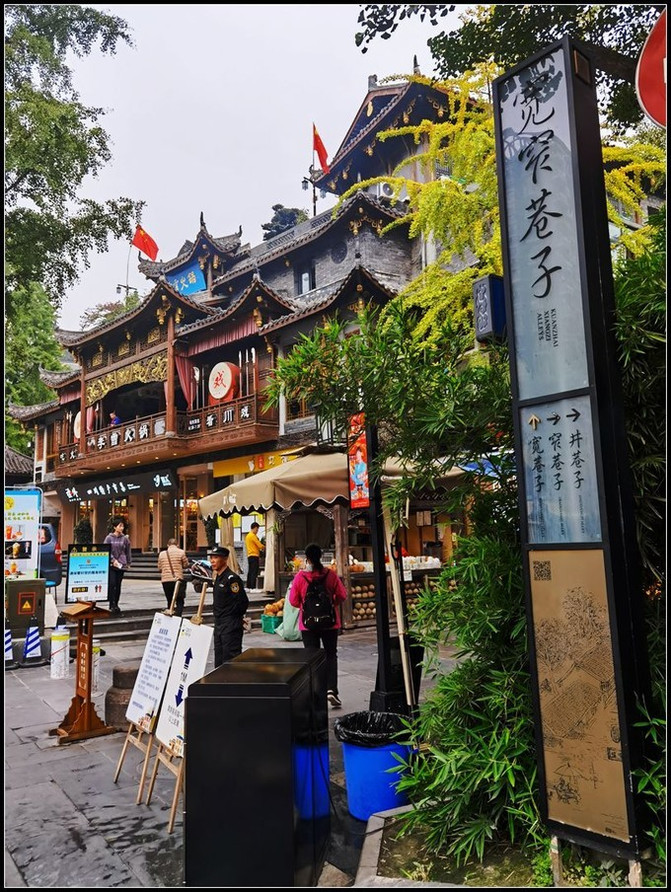
Chengdu's wide and narrow alleys. We came here once in May this year. The wide and narrow alleys are composed of wide alleys, narrow alleys, and well alleys arranged in parallel. They are all antique courtyards made of indigo bricks and tiles. This is also a relatively large-scale ancient street of the Qing Dynasty left over from Chengdu. Together with Daci Temple and Wenshu Yuan, it is also called Chengdu's three major historical and cultural cities protected districts. Kuanzhai Alley has successively won the titles of Commercial Pedestrian Street with Chinese Characteristics in 2009; Famous Historical and Cultural Street in Sichuan Province; New Ten Scenery in Chengdu in 2011; and Top Ten Most Beautiful Streets in Sichuan.






The overall spatial style of the renovated Kuanzhai Alley is relatively complete, continuing the layout of Kuanzhai Alley in Western Sichuan during the Qing Dynasty. The street belongs to the northern Hutong streets in terms of shape, and its main feature is the fish-spine-shaped road pattern. This pattern is convenient for street residents to manage spontaneously and lays the tone for a quiet and leisurely life.


Wide and narrow alleys are the best embodiment of Chengdu's leisure city life. From the Eight Banners 'children carrying cages, raising birds, planting flowers and cultivating grass during the Mancheng period in the Qing Dynasty; to the high-ranking officials and dignitaries drinking and banquets for guests and friends during the Republic of China, to the modern literati and tourists enjoying life with a cup of green tea and a bamboo chair, the wide and narrow alleys have become a typical reflection of the comfortable life in Bashi, Chengdu.


The stewed pig nose arch is inserted with green onions to "hold the elephant"


Chengdu's Kuanzhai Alley is also a tourist distribution center. Every morning, there are tourist buses sent here to various attractions near Chengdu. As long as you register online and wait here 10 minutes in advance according to the specified time that day. It is very convenient. We took a bus here today to Dujiangyan.

It is quite convenient to take this Chengdu Scenic Area direct train and the round trip trip to Dujiangyan is 58 yuan/person.
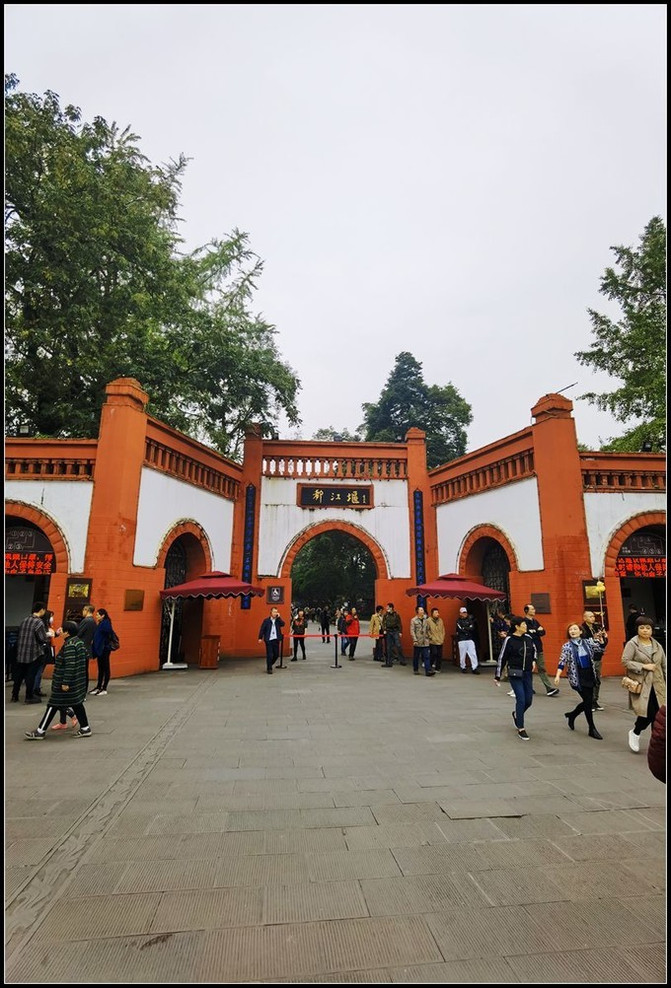
Dujiangyan is a world cultural heritage, a world natural heritage, a national key cultural relics protection unit, a national scenic spot, and a national 5A-level tourist attraction.


Dujiangyan is located on the Minjiang River in the west of the Chengdu Plain and was founded in the late years of King Zhao of the Qin Dynasty (About 256 - 251 BC), it is a large-scale water conservancy project organized and built by Li Bing, the prefect of Shu Prefecture, on the basis of the excavation of Bieling by his predecessors. It consists of water diversion fish mouth, flying sand weir, treasure bottle mouth and other parts. For more than two thousand years, it has been playing a role in flood control and irrigation, making the Chengdu Plain a land of abundance where floods and droughts follow people and thousands of miles of fertile fields. So far, the irrigation area has reached more than 30 counties and cities, covering an area of nearly 10 million acres. It is by far the world's oldest and only surviving. The grand water conservancy project characterized by water diversion without dams embodies the crystallization of the hard work, courage and wisdom of ancient Chinese laborers.

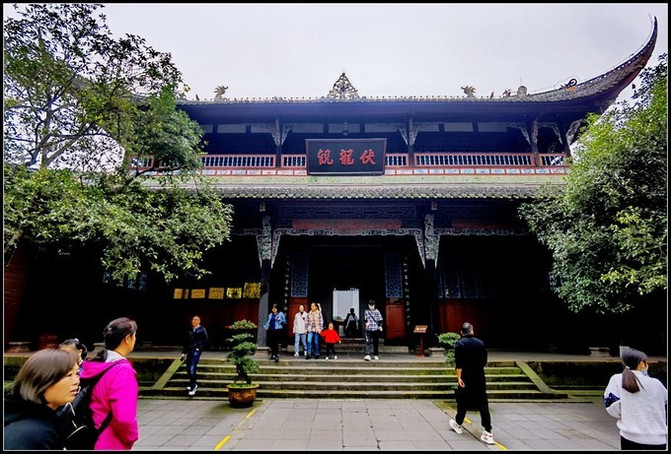
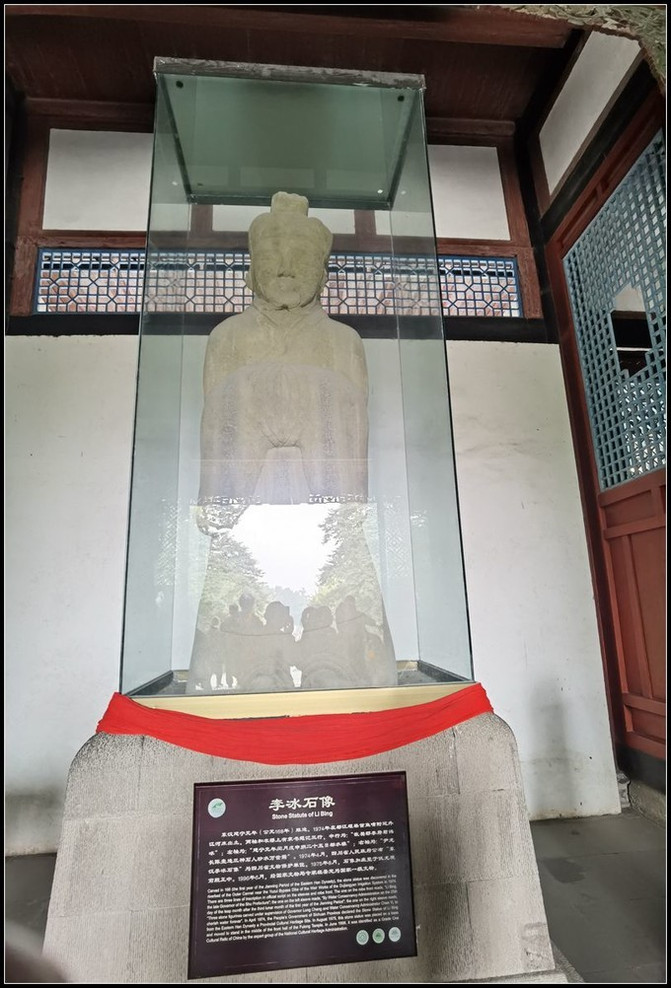



Baopingkou, because gunpowder had not yet been invented when Li Bing and his son built Dujiangyan, Li Bing burned stones to burst the rocks, and finally dug a mountain pass 20 meters wide, 40 meters high, and 80 meters long in Yulei Mountain. Because its shape resembles a bottle mouth, it is named Baopingkou, and the stone pile separated by Yulei Mountain is called Lidui.




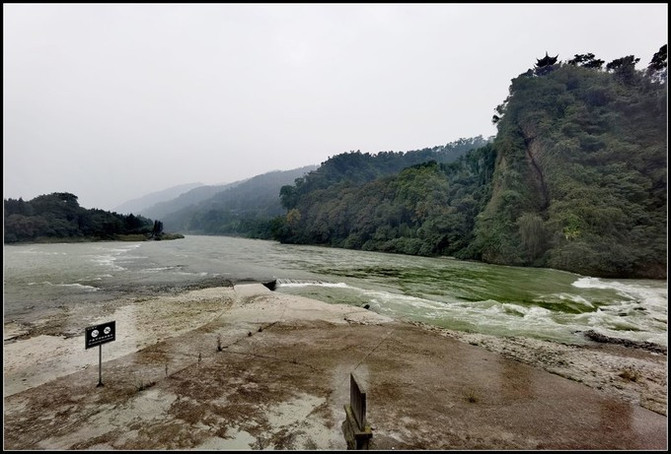


In order to allow the Minjiang River water to flow eastward smoothly and maintain a certain flow rate, and give full play to the flood diversion and irrigation role of the Baopingkou, the builder Li Bing decided to build a water diversion dam in the Minjiang River after digging the Baopingkou. Dividing the river water into two branches: one goes down the river, and the other is forced to flow into the Baopingkou. Because the front end of the diversion weir is shaped like the head of a fish, it is called the fish mouth. The completion of the Yuzui divides the rushing river water in two: the west is called the Waijiang River, which flows downstream along the Minjiang River in rain; the east is called the Neijiang River, which flows into the Baopingkou. Because the inner river is narrow and deep, and the outer river is wide and shallow, so the water level is low in the dry season, 60% of the river water flows into the inner river with the low river bed, ensuring the production and domestic water in the Chengdu Plain; when floods come, due to the high water level, most of the river water is drained from the outer river with the wider river surface. This design of automatically allocating the water volume of the inner and outer rivers is called the so-called four-six water diversion.




Anlan Cable Bridge is also known as Anlan Bridge, and also known as Couples Bridge. Located above the fish mouth of Dujiangyan and spanning the two rivers inside and outside, it is known as one of the five major bridges in ancient China and is the most characteristic landscape of Dujiangyan. It was built before the Song Dynasty and was destroyed by war in the late Ming Dynasty (17th century AD). It was named Zhupu Bridge in ancient times. It was renamed Pingshi Bridge in the first year of Chunhua of the Song Dynasty, and the new bridge built in Jiaqing of the Qing Dynasty was renamed Anlan Bridge. The original cable bridge was supported by wooden rafts and stone piers, with thick bamboo cables hanging across the river surface, wooden boards were laid on the deck, bamboo cables were used as fences on both sides, and the bridge was made of steel cable concrete piles.










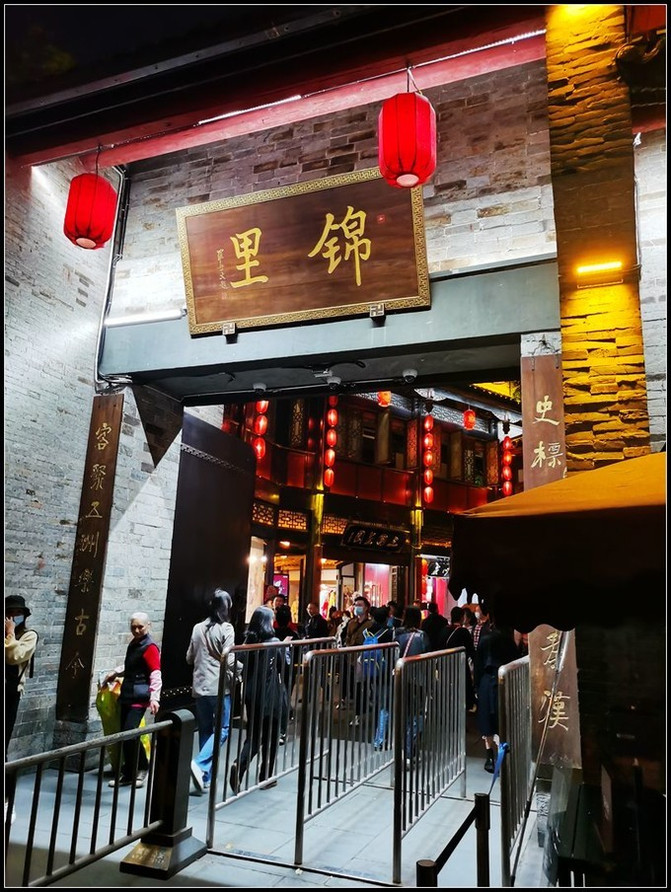

Jinli was once one of the oldest and most commercial streets in the history of Xishu. It was famous nationwide as early as the Qin, Han and Three Kingdoms periods. Today's Jinli relies on the Wuhou Temple in Chengdu, with the spirit of the Qin, Han and Three Kingdoms as its soul, the style of the Ming and Qing Dynasties as its exterior, and the folk customs and folk customs of western Sichuan as its content, expanding the extension of the culture of the Three Kingdoms. On this street, the essence of Chengdu life is condensed: tea houses, inns, restaurants, bars, stage, snacks, handicrafts, and local specialties, fully demonstrating the unique charm of the culture of the Three Kingdoms and Sichuan folk customs. Jinli relies on the Wuhou Temple, and "worshiping Wuhou and soaking in Jinli" has become one of the most appealing slogans for Chengdu tourism.

In Jinli at night, lights were shining and people were crowded. It was bustling and very lively.



Hot pot is a representative symbol of Chengdu's catering culture and the love of Chengdu people. At night, the street is filled with the strong flavor of Sichuan hot pot. We searched five or six hot pot restaurants in a row, but they were all full and we had to queue up to wait. In the end, I found this hot pot restaurant called "Shuaye" so that I didn't have to wait in line and ate hot pot.

Day 5: Chengdu-Sanxingdui-Chengdu
Today we still go to Kuanzhai Alley. At 10:40, we take the Chengdu Scenic Area Express to visit the Guanghan Sanxingdui Museum. At 15:30, we take the bus back to Chengdu.
Accommodation: Jinjiang Hotel
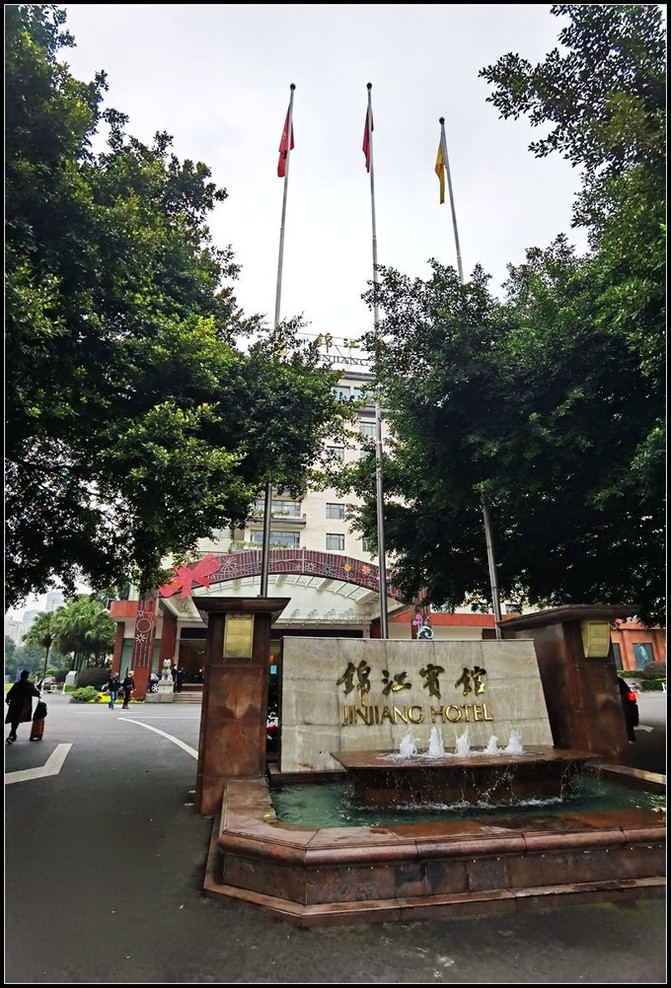
Stayed at "Mingyu Shangya" for two nights. After breakfast, we moved to Jinjiang Hotel across the river.


We stayed in the VIP building of Jinjiang Hotel. This is one of the best five-star hotels in Chengdu. It is a great hotel and we checked in at 9 o'clock. We also booked this hotel in advance in June and the price was very good. We included two breakfast buffets for two nights and one evening dinner buffet.


After packing, we took the subway to Kuanzhai Alley again, and from here we took the bus to visit the Guanghan Sanxingdui Museum.

This kind of coach goes to the entrance of Sanxingdui Museum and has a return ticket of 66 yuan/person. It leaves at Kuanzhai Alley at 10:40 a.m.., can enjoy the tour after arriving at Sanxingdui Museum, and leaves at 3:30 p.m. and returns.

It takes about an hour to drive from Chengdu to Sanxingdui Museum. Sanxingdui Museum is located at the northeast corner of Sanxingdui Site, a national key cultural relic protection unit. It is located on the Yazi River in the west of Guanghan City, a famous historical and cultural city. It is 40 kilometers away from Chengdu to the south and 26 kilometers away from Deyang to the north. It is a modern thematic site museum in China. The foundation was laid in August 1992 and was completed and opened in October 1997. The Sanxingdui Museum area covers an area of about 530 acres.

With its four major characteristics of cultural relics, architecture, display and gardens, Sanxingdui Museum has become a well-known cultural relics tourist attraction at home and abroad. It is one of the five major tourist attractions in Sichuan, the first batch of national AAAA tourist attractions, and a national first-level museum. The shape of the main building of Sanxingdui Museum pursues a charm that combines with the landform, historical sites and cultural relics plastic arts, integrating the original meaning and the modern atmosphere. The layout of the environment outside the museum is ingenious and unique. The park is green with green grass and the shadows of lakes and islands, which fully reflects the combination of the museum, museum and garden.



The Sanxingdui ancient site has a history of 5000 to 3000 years. It is the largest ancient city, ancient country, and ancient Shu cultural site found so far in Southwest China, the longest duration, and the richest cultural connotation. There are the most completely preserved east, west and south city walls and the inner city wall of Moon Bay. The Sanxingdui site is known as one of the greatest archaeological discoveries of mankind in the 20th century. It shows that the Yangtze River Basin, like the Yellow River Basin, belongs to the mother of Chinese civilization and is known as the source of the Yangtze River civilization. The unearthed cultural relics are valuable human cultural heritage. Among China's cultural relics groups, they are one of the most historical, scientific, cultural, artistic value and the most ornamental cultural relics groups.







The bronze Daliren is 2.62 meters high and weighs more than 180 kilograms. The figure wears a high crown in the shape of a beast's face and wears three layers of clothing. The outermost layer of clothing is similar to a "tuxedo". The arms are raised flat, and the hands are in the shape of holding objects and offering sacrifices.

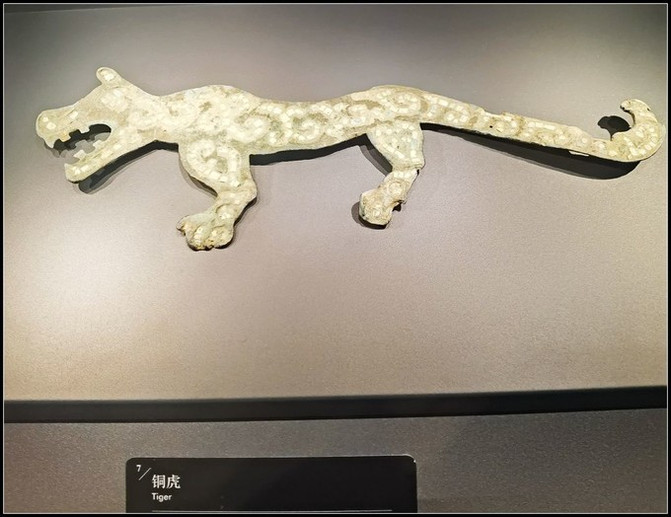

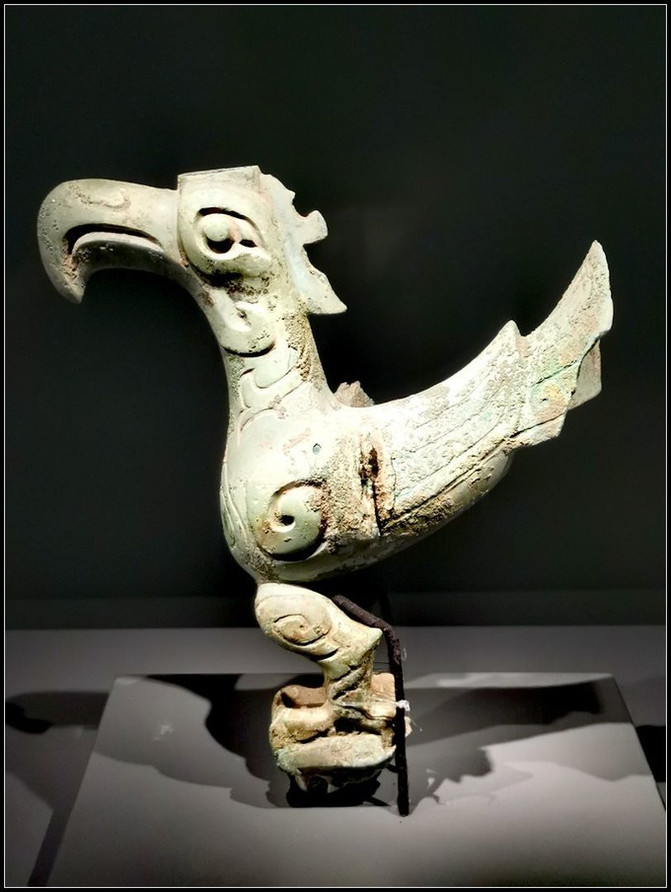




The tall shape, vivid shape and complex structure are important characteristics of Sanxingdui bronzes. The bronze divine tree is 384 centimeters high and has nine branches on the tree. Birds perch on the branches, and fruits hang down under the branches. There is a dragon next to the tree pole to support the tree. It is very vivid and mysterious, and it concretely reflects the ancient Fusang mythological image.




The large bronze beast mask is 138 centimeters wide and weighs more than 80 kilograms. The shape is extremely exaggerated. The square face looks like a human being, a beast, and a large horn shaped ears are towering, and the long eyeballs protrude outward. Its face is very ferocious and grotesque, and it can be said to be the best in bronze art.

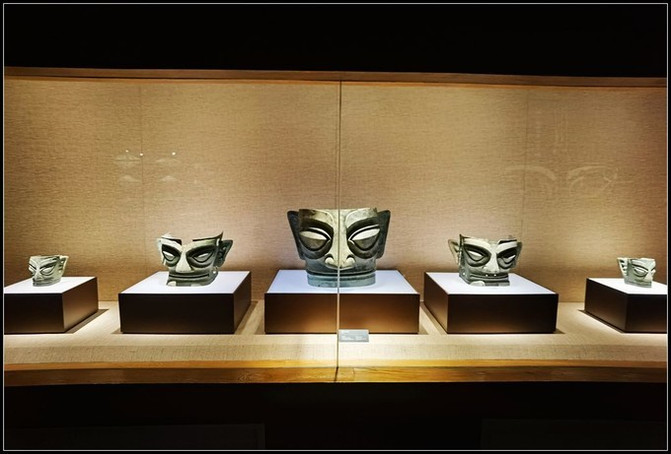

The bronze mask of the man wearing the crown and the vertical eyes among the many bronze human faces have three famous shapes of "clairvoyance and wind ears". They are not only huge in size, but also have their eyeballs clearly protruding out of the eye sockets. Their ears are extremely exaggerated, growing up to look like animal ears. The big mouth is also as wide as the ears of the ears, giving the human body an indescribable surprise and strangeness. And their lips kiss on the triple lips and the upturned smiles give people a sense of mystery and intimacy.
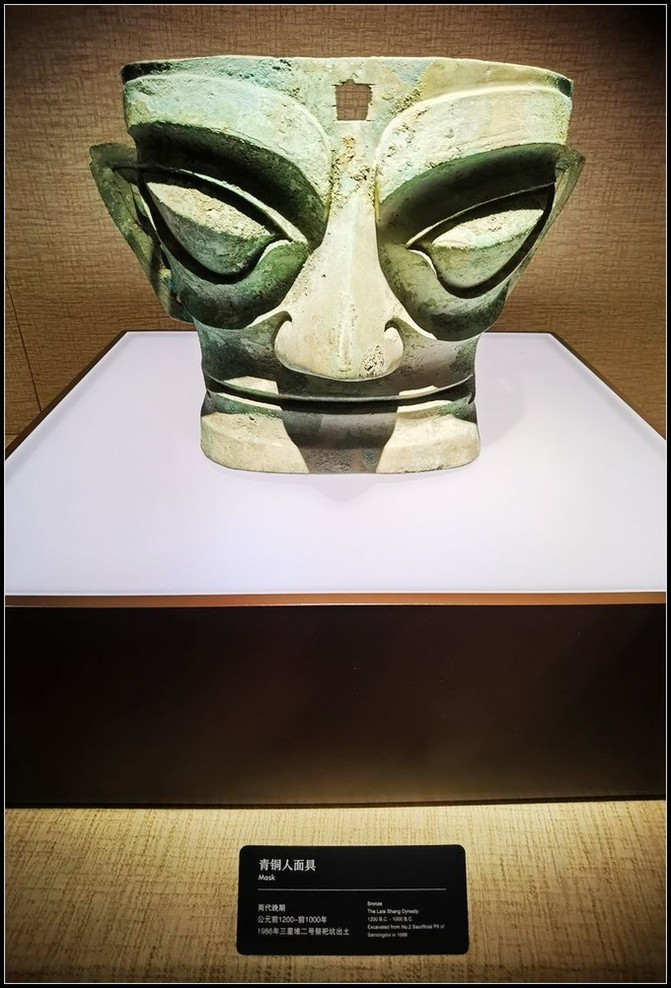

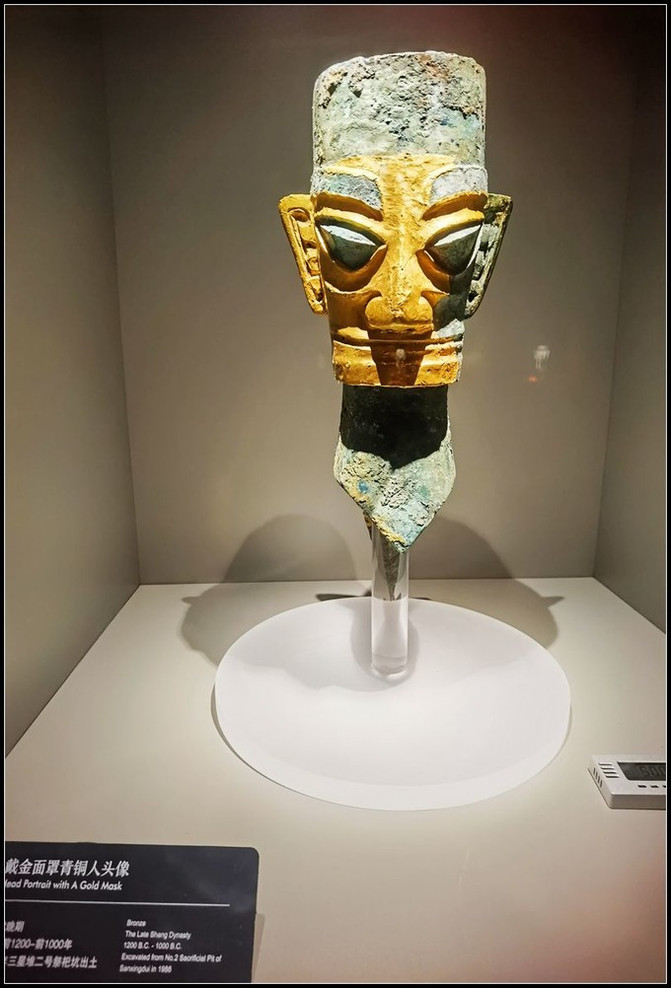


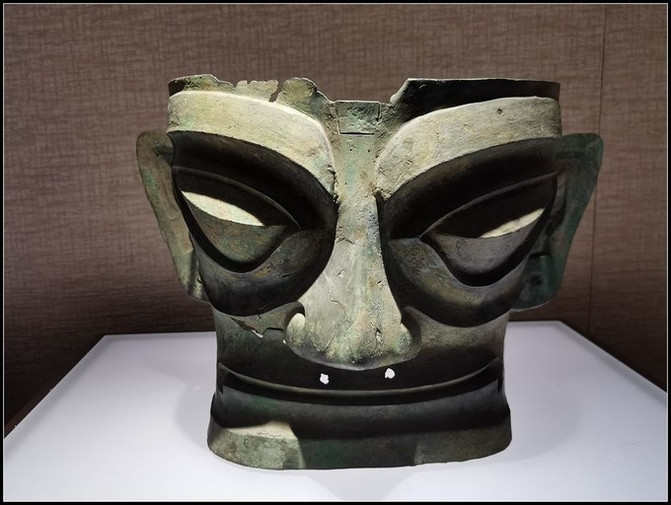



Sanxingdui bronzes are characterized by a large number of figures, birds, animals, insects, snakes, and plants. Bronze human heads, human faces and human masks represent the ancestral gods sacrificed; bronze standing figures and kneeling figures represent the sacrificial prayers and those presiding over the sacrificial ceremony; bronze animal masks with protruding eyes and flat bronze animal faces may be natural gods worshipped by the Shu people; the bronze divine tree, which is characterized by imitating plants, reflects the Shu people's religious consciousness of plant worship. The religious concept with ancestor worship and natural gods such as animals and plants as the main body was the main spiritual world of the early Shu people.



The magical bronze sun wheel is really like the steering wheel of a modern car.






The world's earliest golden staff. It is 142 centimeters long, 2.3 centimeters in diameter, and weighs more than 700 grams. It is engraved with human heads, fish and bird patterns.




Yin and Yang Eight Trigrams Sacrifice Square and Sacrifice Platform.

Return to Chengdu Jinjiang Hotel in the afternoon.

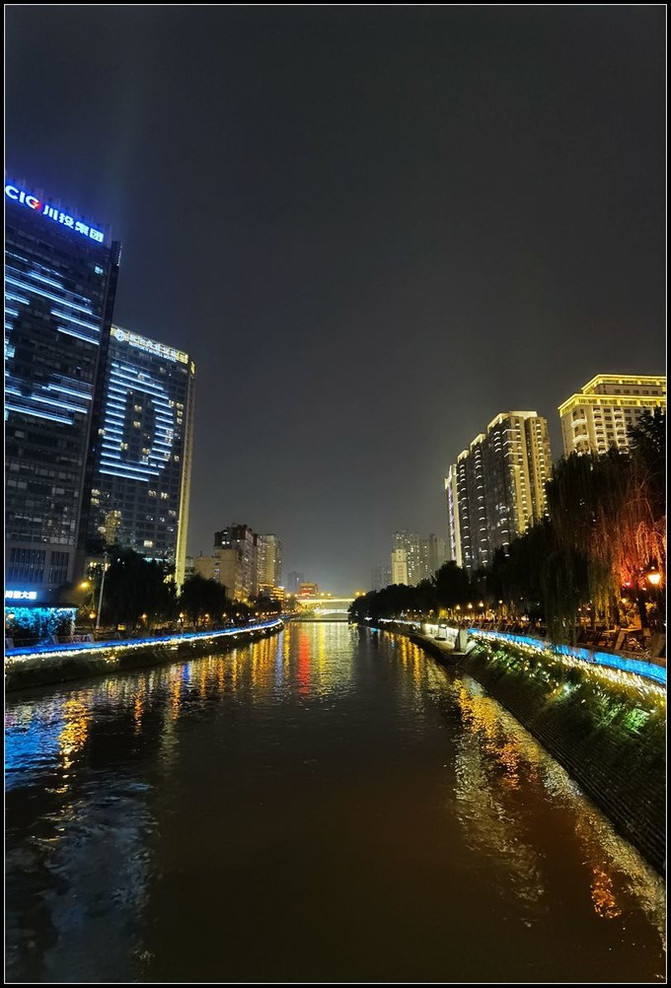
Jinjiang Night View

Jinjiang Hotel is the first five-star hotel in Southwest China. It is located on Renmin South Road, the main road in Chengdu City, adjacent to the famous Funan River, echoing Tianfu Square. It was built in 1958, and the name Jinjiang was personally chosen by two veterans, Zhu De and Chen Yi.


Jinjiang Hotel VIP Building cafeteria. We eat here in the evening.


Day 6: Chengdu-Anren Ancient Town-Chengdu
Take the subway to Chengdu Chadianzi Passenger Station, take the bus to Anren Ancient Town, Dayi County. The fare is 18 yuan/person. Visit Liu Wenhui Mansion, Jianchuan Museum Settlement, Dayi Liu Manor Museum, and Anren Ancient Town. After the tour, take the bus to Anren Passenger Station and return to Chengdu. There are many attractions here. You can stay for 1 night and travel for 2 days.
Accommodation: Jinjiang Hotel

After breakfast, take the subway to Chengdu Chadianzi Passenger Station. Buy a ticket and take the bus for about 70 minutes to visit Anren Ancient Town in Dayi County.

Anren Ancient Town was built in the Tang Dynasty. Most of the existing old-style neighborhood buildings were built in the late Qing Dynasty and the early Republic of China. Especially during the heyday of the Liu family during the Republic of China, the most buildings were built. The styles combined Chinese and Western styles, and the solemn, elegant and generous courtyards created Anren Town's special architectural style is known as a masterpiece of Western Sichuan architectural culture. The first thing we visited was Liu Wenhui's residence.

Liu's Manor consists of five mansions (Liu Wenyuan, Liu Wenzhao, Liu Wencheng, Liu Wencai, Liu Wenhui) successively built by Liu Wencai, a great bureaucratic landlord in Sichuan and his brothers in modern times, and an ancestral residence of the Liu family. It is distributed into two large buildings facing north and south. It covers a total area of more than 70,000 square meters, a building area of more than 21,000 square meters, and a total of 545 houses. It is currently the largest modern landlord's manor complex in China. The entire manor building complex was built in the late Qing Dynasty. After several large-scale constructions and expansions, it reached its current scale by the end of the Republic of China. Their residences are all closed courtyards with high walls and deep courtyards. They are typical of a combination of Chinese and Western architectural styles, with gables on top of the roof, heavy doors and deep alleys, and twists and turns, like a maze, fully reflecting the luxury and pomp of the wealthy homes in modern western Sichuan.



Liu Wenhui was originally a Sichuan warlord and was Liu Xiang's uncle, commonly known as Liu Yaoba. Commander of the 24th Army of the Republic of China and general of the Army. Chairman of Sichuan Province, one of the protagonists of Sichuan's battle for hegemony, is a fire in the five elements of the Sichuan Army. He is politically powerful and nicknamed Taoist Duo Bao. He ruled Xikang Province for ten years and was known as King Xikang. He led an uprising on December 9, 1949, and was awarded the First Class Liberation Medal in 1955. He has served successively as Vice Chairman of the Southwest Military and Political Committee, Vice Chairman of the Sichuan Province CPPCC, and Minister of the Ministry of Forestry. Yu died of illness.
Liu Wenhui Mansion Liu Wenhui Mansion


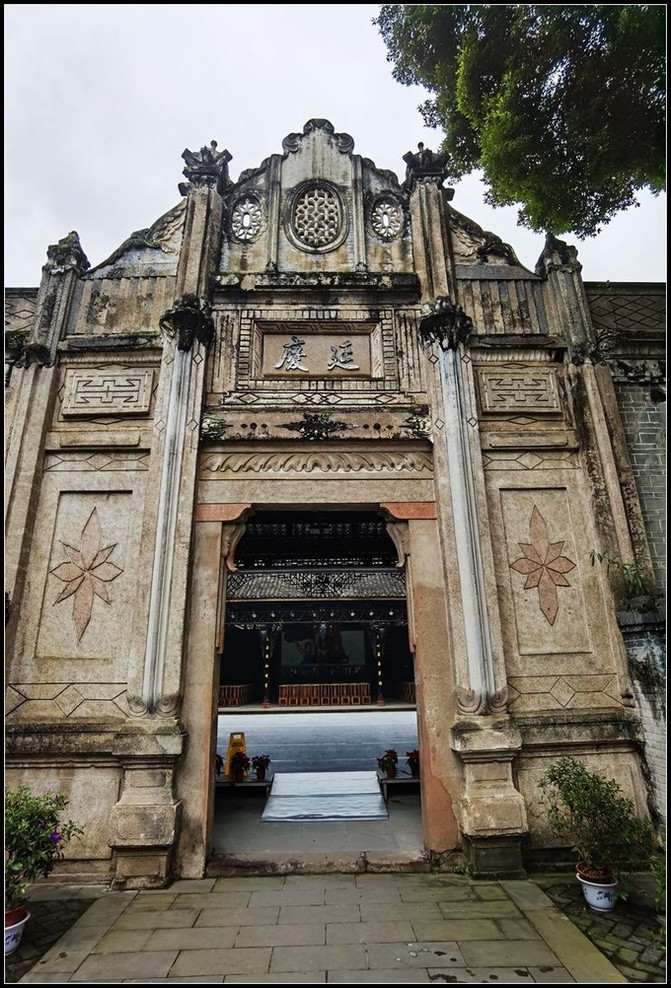



The style of Anren Ancient Town. In 2009, the Chinese Museum Society awarded Anren the title of Hometown of Chinese Museums. So far, Anren has become the only ancient town in China named after a museum, forming an urban culture developed through the cultural tourism industry.
Sichuan Jianchuan Museum Settlement
The Jianchuan Museum Settlement was founded by private entrepreneur Fan Jianchuan and is located in the Chinese museum town-Anren Ancient Town, Dayi County. The museum covers an area of 500 acres, has a construction area of nearly 100,000 square meters, has more than 10 million collections, and has 329 first-class cultural relics from China. With the theme of collecting wars for peace; collecting lessons for the future; collecting disasters for tranquility; and collecting folk customs for inheritance. The museum has built more than 30 branches in the four series of Anti-Japanese War, Folk Customs, Red Age, and Earthquake Relief. It has been completed and opened. With 25 venues, it is currently the private museum with the largest investment in private capital, the largest construction scale and exhibition area, and the richest collection content in China. The ancient town tourist area composed of the Jianchuan Museum settlement, the old street and the old mansion group neighborhood, and the pastoral scenery area of Liu Wencai and Liu Wenhui Mansion form the three major tourist sections of Anren Ancient Town.
Sichuan Jianchuan Museum Settlement
Sichuan Jianchuan Museum Settlement Sichuan Jianchuan Museum Settlement

Anti-Japanese War Veterans Handprint Square. The owner of every handprint here is a veteran who participated in the War of Resistance. Among them, the oldest is 99 years old and the youngest is 79 years old; some have passed away and some are still alive. The material used in the forest of steles is tempered glass, and the fingerprints are printed on the tempered glass by corrosion. This material is hard and transparent, which means that the hearts of veterans are as bright and full of vitality as the sunshine of heaven and earth. The colorful handprints symbolize the spirit of patriotic sacrifice of veterans. Each tempered glass monument is 2.4 meters wide and 3.7 meters high, and its base is made of granite. The forest of steles is a collection of veterans, heroes and strength, and a collection of national spirit and integrity!

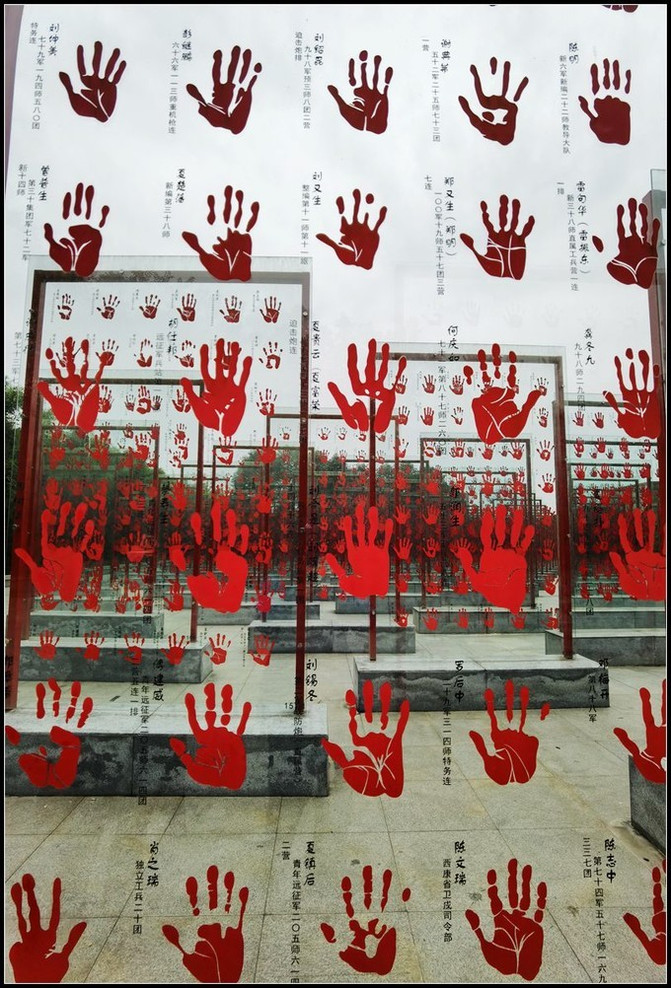
Pillar Pavilion. This exhibition hall displays and displays the eight-year War of Resistance against the Communist Party and its troops under its leadership, and people behind enemy lines in the form of photos, materials, objects, historical documents, tunnel warfare, landmine warfare, restoration of green gauze tent scenes or real-life landscapes. In difficult environments, the Communist Party of China has always adhered to the banner of national resistance and became the mainstay of the Chinese nation.
Sichuan Jianchuan Museum Settlement
Sichuan Jianchuan Museum Settlement
Sichuan Jianchuan Museum Settlement
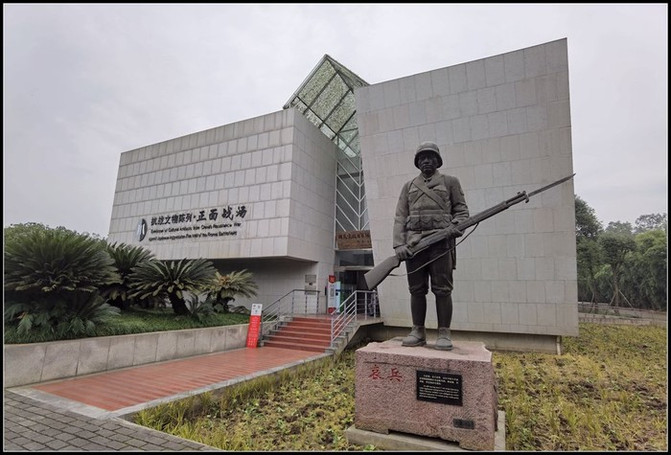
Frontal Battlefield Museum, this exhibition museum reproduces the anti-Japanese war between the Kuomintang government and the army through cultural relics, pictures, and historical materials. The museum is divided into three units: Unit 1: The Origin of the Anti-Japanese War, which briefly introduces the history of the Kuomintang government from avoiding war to the Anti-Japanese War from 1931 to 1937, focusing on the local Anti-Japanese War of some patriotic generals of the Kuomintang. The second unit of the frontal battlefield mainly displays the 22 major battles of the Kuomintang army in the War of Resistance Against Japanese Aggression, truly recreating the scene of the confrontation between the Chinese and Japanese armies. Unit 3: Defend the enemy in the air.
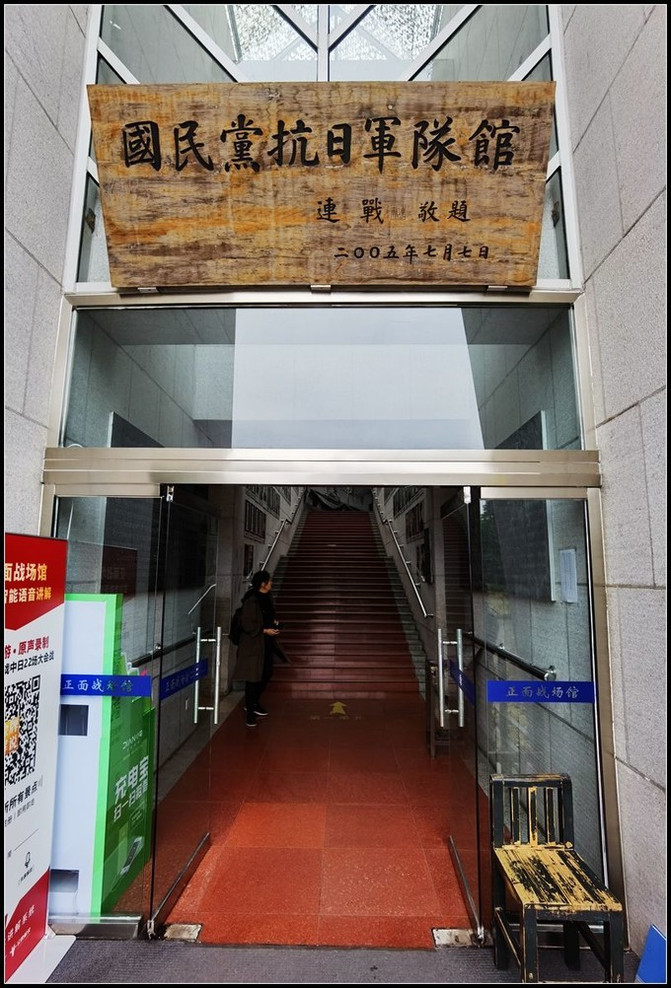

On both sides of the stairs upstairs are displayed the portraits of 256 national generals who died during the War of Resistance.


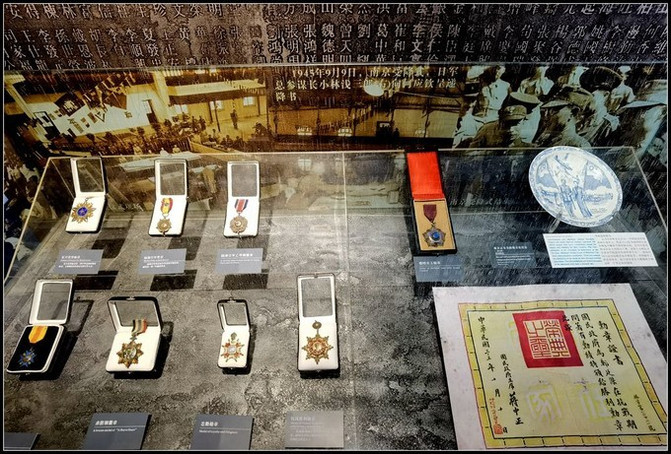
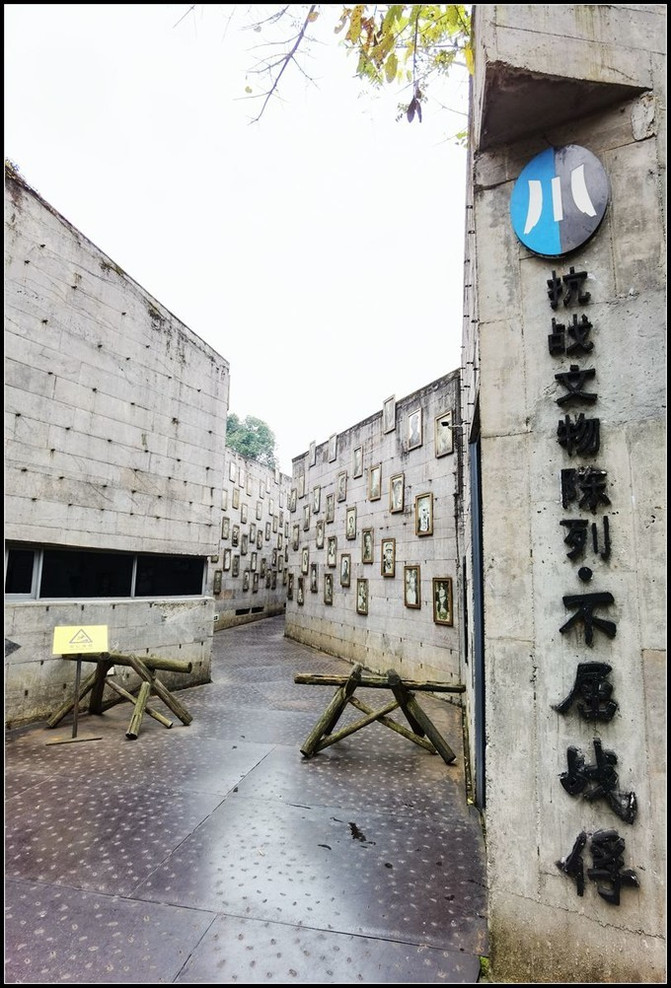
Unyielding prisoners of war. Use photo display to pay tribute to the warriors who were captured during the War of Resistance and persisted in the struggle.


Yuanhua Yishi Square. On the square are statues of righteous men from various countries such as the United States and the Soviet Union who supported China's War of Resistance.

The Flying Tigers Pavilion displays the combat situation of the Flying Tigers aided by the United States to China.


Sichuan Army Anti-Japanese War Hall. During the Anti-Japanese War, Sichuan was one of the regions in China with the largest number of people participating in the war and the most tragic sacrifices. In order to resist Japan, the Sichuan Army implemented Chiang Kai-shek's order to nationalize the army and accepted the reorganization of the National Government. The footprints of the Sichuan Army cover all over the country's anti-Japanese battlefields. In almost all major battles against Japan, Sichuan Army soldiers were present. When the nation was in danger, they put national interests first, deeply understood the righteousness, endured humiliation, generously died, and fought countless desperate battles against the well-equipped Japanese army with inferior weapons.



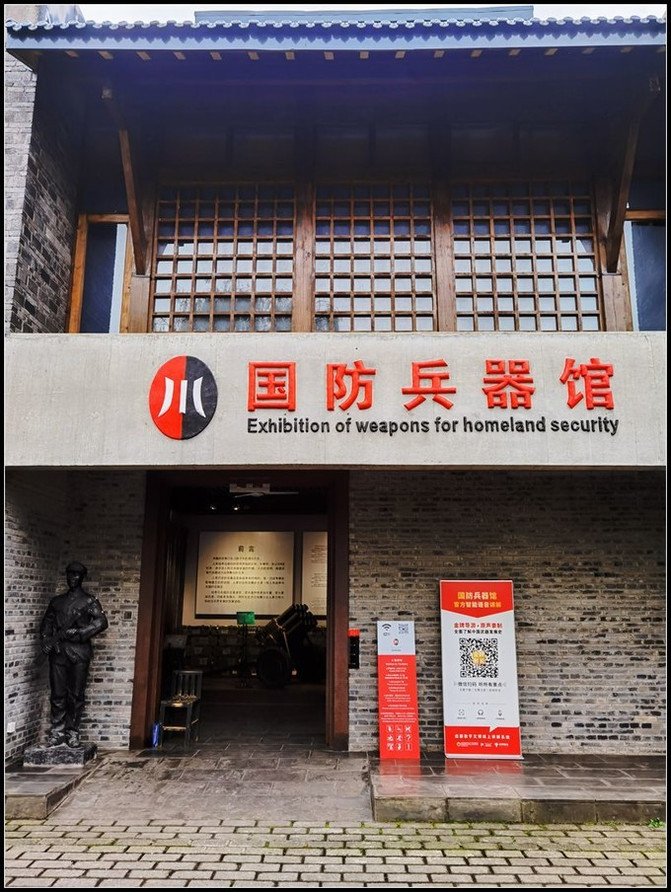

















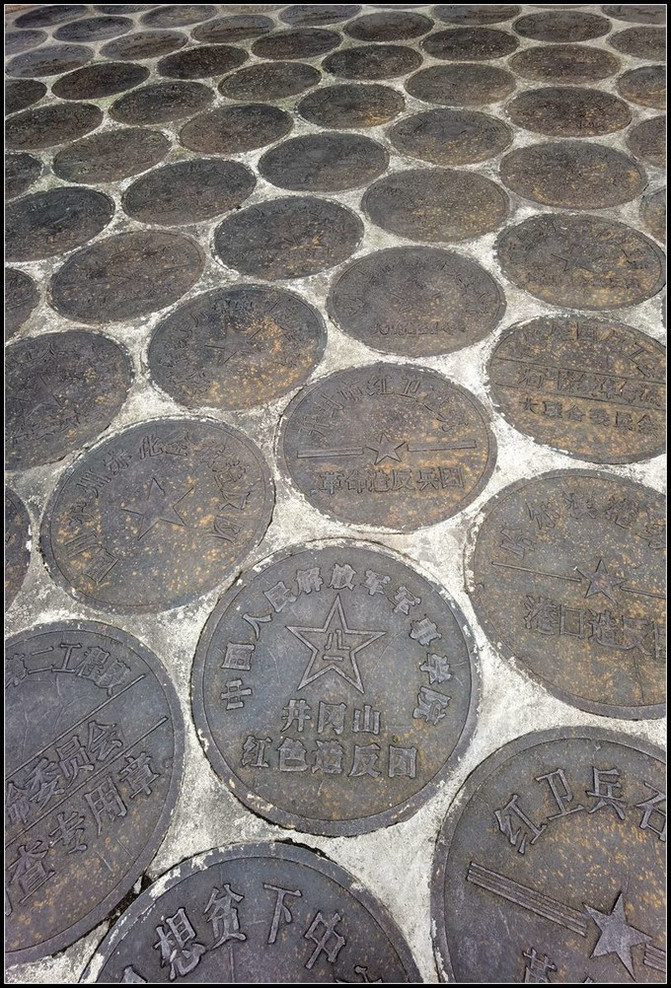




At noon, taste the famous fat intestines and blood curd in Anren Ancient Town.

Liu Wencai Manor, the big landlord. It is now the Dayi Liu Manor Museum, one of the important historical sites and representative buildings in modern Chinese society. The museum was built in 1958. In 1997, the Dayi Landlord Manor Exhibition Hall was officially renamed the Dayi Liu Manor Museum.

Dayi Liu's Manor Museum covers an area of more than 70,000 square meters and a building area of 21055 square meters. It is a typical western Sichuan Bazi architectural style, completely retaining the architectural pattern of the late Qing Dynasty and the early Republic of China. It has witnessed the changes of society and history and demonstrated the architectural skills and rural folk and traditional culture of the four western Sichuan provinces in modern times. The museum's buildings, collections, clay sculptures, and remains are important objects for understanding and studying the politics, economy, culture of China's semi-colonial and semi-feudal society, as well as the history of Sichuan warlords, folklore, and modern residential buildings. They are also a cross-section of the development history of modern Chinese society. The museum is a national third-level museum, a national key cultural relics protection unit, a national AAAA tourist attraction, an excellent patriotic education base in the national cultural relics system, and a national youth education base.


Dayi Liu's Manor Museum covers an area of more than 70,000 square meters and a construction area of 21055 square meters. It is two major building complexes facing the north and south and 300 meters apart. The old manor has an irregular polygon shape, surrounded by wind and fire brick walls more than 6 meters high, 7 gates, 27 patios, more than 180 houses, and 3 gardens. The manor has heavy walls and alleys, thick doors and iron locks, secret rooms and roads, and a messy layout. The whole manor is like a dark labyrinth building. There are various shapes such as rectangle, square, trapezoid, and diamond; there are hundreds of decorations such as carved door threads. The interior of the manor is divided into a hall, living room, reception room, accounting room, employment home, rent collection yard, granary, secret treasury, water prison and Buddhist hall, Wangyue Terrace, Xiaoyao Palace, garden, orchard and other parts.
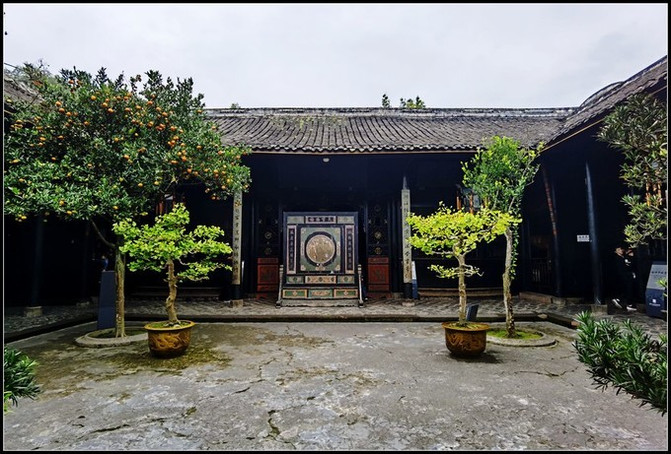
















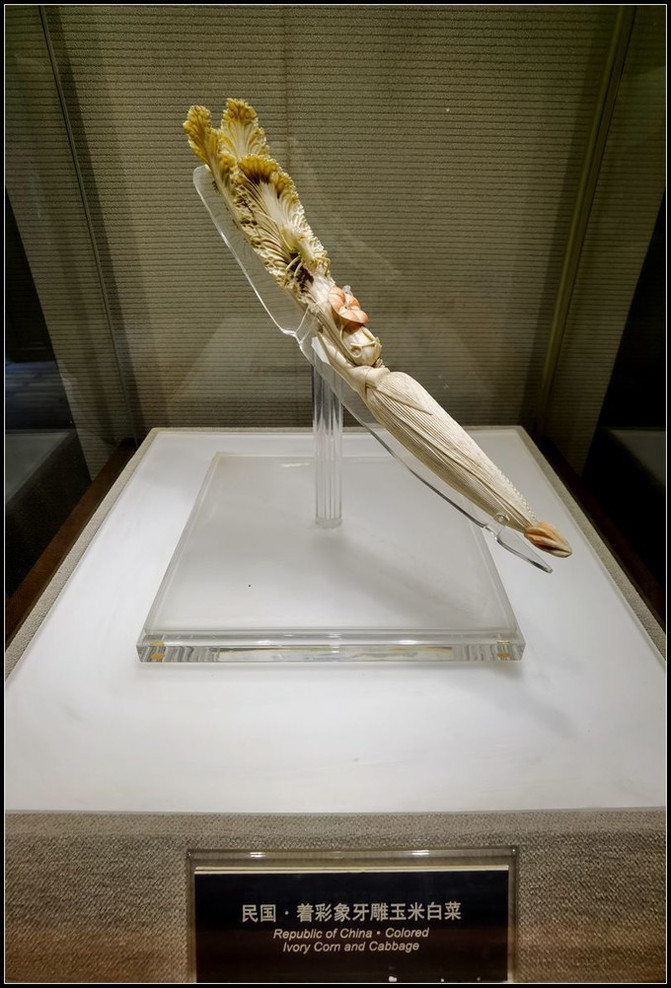

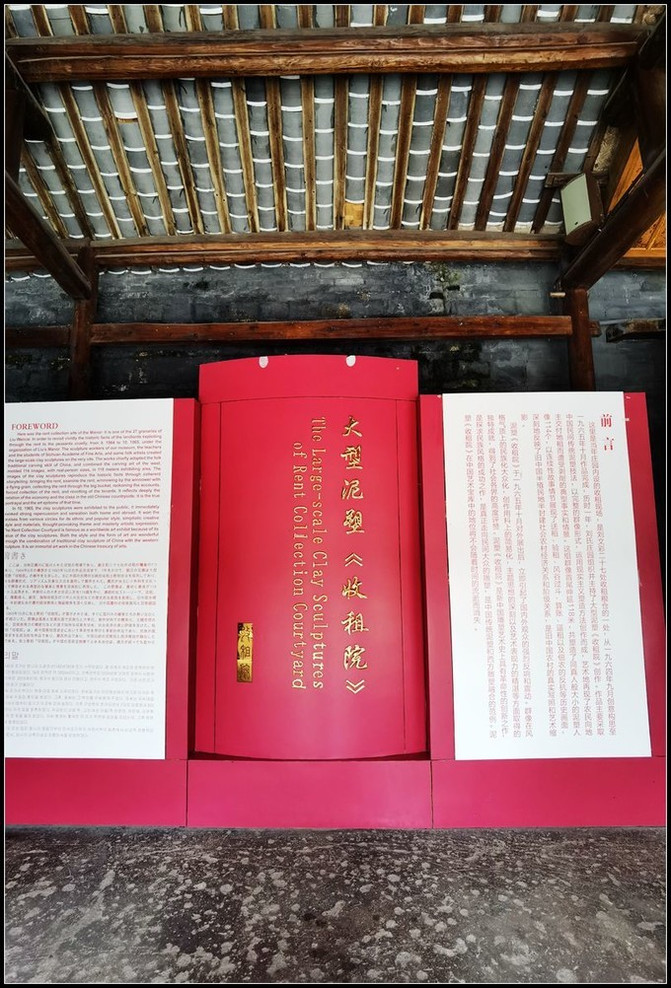
The large-scale clay sculpture "Rent Collection Courtyard" displayed at Liu Wencai Manor in Dayi County, Sichuan Province, was created in 1965 and is a large-scale clay sculpture group statue in modern China. "Rent Collection Court" was conceived and created based on the rent collection situation of landlords at that time, and created a total of 7 groups of portraits: rent payment, rent inspection, wind valley, fighting, accounting, forcing rent, and resisting. It shows the main means used by landlords to exploit farmers-the entire process of collecting rent, and creates a total of 114 life-sized characters. The sculptor blends Western sculpture techniques with traditional Chinese folk clay sculptures techniques.









The old street style of Anren Ancient Town. Anren has relatively well-preserved historical districts and ancient mansions with an area of about 300,000 square meters; there are 27 ancient mansions such as Liu's Manor Group and Liu Xiang Mansion preserved during the Qing Dynasty; there are three ancient streets including Hongxing Street, Shuren Street, and Yumin Street; Xiaoyanglou (formerly the site of the Charity Society), Anren Middle School (originally the original Cai Middle School), Bell Tower, etc.

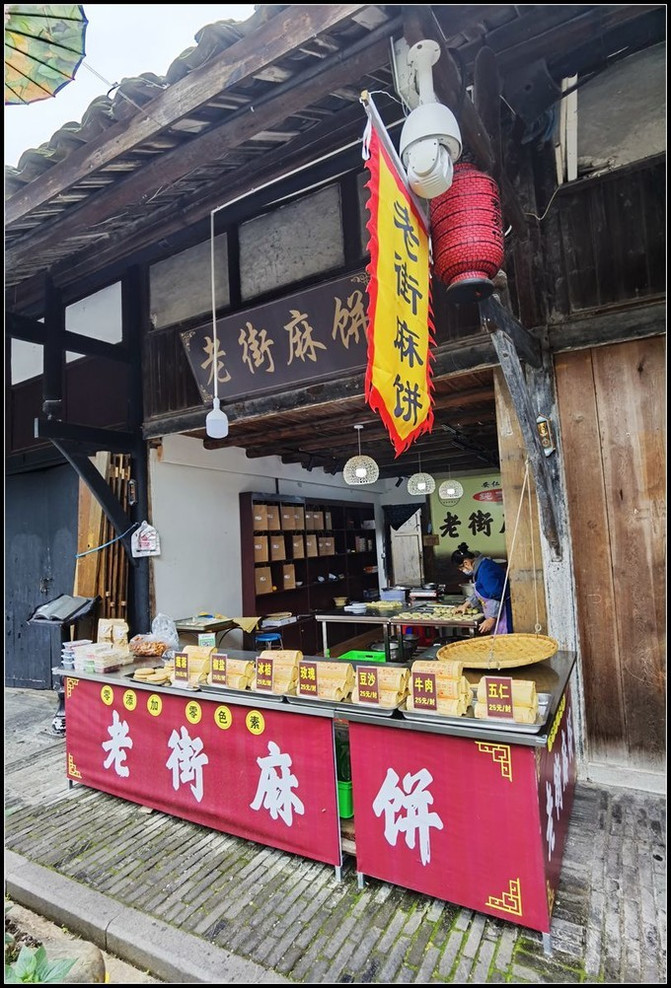




The three old streets of Anren Ancient Town were all built during the Republic of China. They were the core areas and commercial centers of Anren Town at that time. There are 14 unique residence buildings on the old streets, including Anren Middle School, Anren Theater, Paogge Tower, Wanchengyan Monument, Tongqing Food Hall and other buildings with unique characteristics of the Republic of China are listed among them, forming a vivid picture of the ancient town of western Sichuan during the Republic of China.


Anren Passenger Station, where you can take a bus back to Chengdu. The latest bus is at 5 p.m.


After returning to Chengdu, enjoy a simple buffet on the 27th floor of the VIP Building of Jinjiang Hotel in the evening. The small restaurant on the 27th floor of the VIP Building provides free simple meals, drinks and fruits from morning to night to guests staying in the business room.
Day 7: Chengdu-Guangzhou
After breakfast, take a bus to visit Wuhou Temple, and take a Southern Airlines flight back to Guangzhou in the afternoon to end a 7-day leisure tour in Sichuan.

After breakfast, take a bus to visit Wuhou Temple. Wuhou Temple is located in Wuhou District, Chengdu City. It is the only temple in China where monarch and minister worship together and the most famous memorial site for Zhuge Liang, Liu Bei and the heroes of the Shu and Han Dynasties. Wuhou Temple (Han Zhaolie Temple) is a national key cultural relic protection unit, a national AAAA tourist attraction, and a national first-class museum. It is also the most influential museum of the Three Kingdoms relics in the country. Wuhou Temple now covers an area of 150,000 square meters and consists of three parts: the Three Kingdoms Historical Relics Area (Cultural Relics Area), the West District (Three Kingdoms Cultural Experience Area) and the Jinli Folk Customs Area (Jinli). It enjoys the reputation of a Holy Land of the Three Kingdoms.






Liu, Guan and Zhang are three people in Taoyuan.


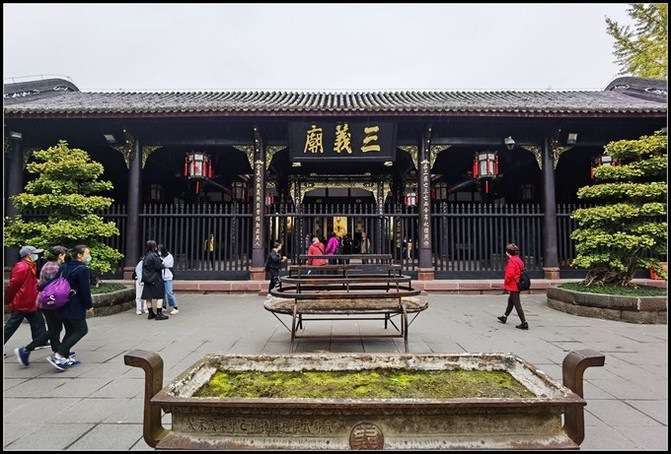


Coming out from the side gate of Wuhou Temple is Jinli. As part of the Wuhou Temple Museum (Three Kingdoms Historical Relics Area, Jinli Folk Area, and West District), Jinli covers an area of more than 30000 square meters, a building area of more than 14000 square meters, and a total length of the street is 550 meters. The building is based on the style of Sichuan folk houses in the late Qing Dynasty and the early Republic of China, and its content is based on the culture of the Three Kingdoms and traditional Sichuan folk culture. Paying homage to Marquis Wu and Paojinli has become one of the most appealing slogans for Chengdu tourism.

Jinli was once one of the oldest and most commercial streets in the history of Xishu. It was famous nationwide as early as the Qin, Han and Three Kingdoms periods. Today's Jinli relies on the Wuhou Temple in Chengdu, with the spirit of the Qin, Han and Three Kingdoms as its soul, the style of the Ming and Qing Dynasties as its exterior, and the folk customs and folk customs of western Sichuan as its content, expanding the extension of the culture of the Three Kingdoms. On this street, the essence of Chengdu life is concentrated: tea houses, inns, restaurants, bars, stage, snacks, handicrafts, and local specialties, fully demonstrating the unique charm of Sichuan folk customs.


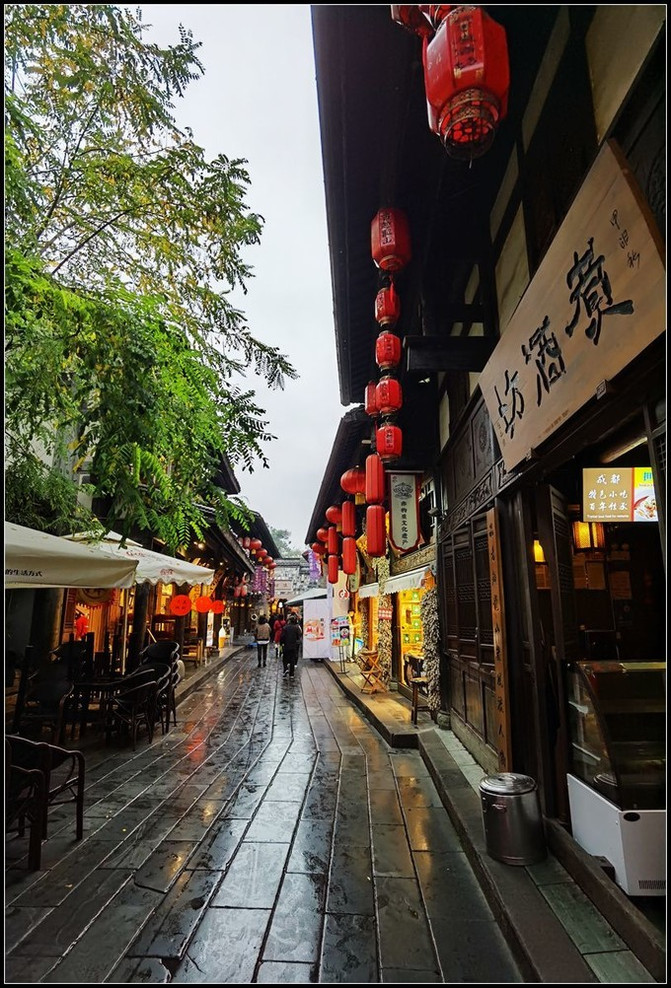
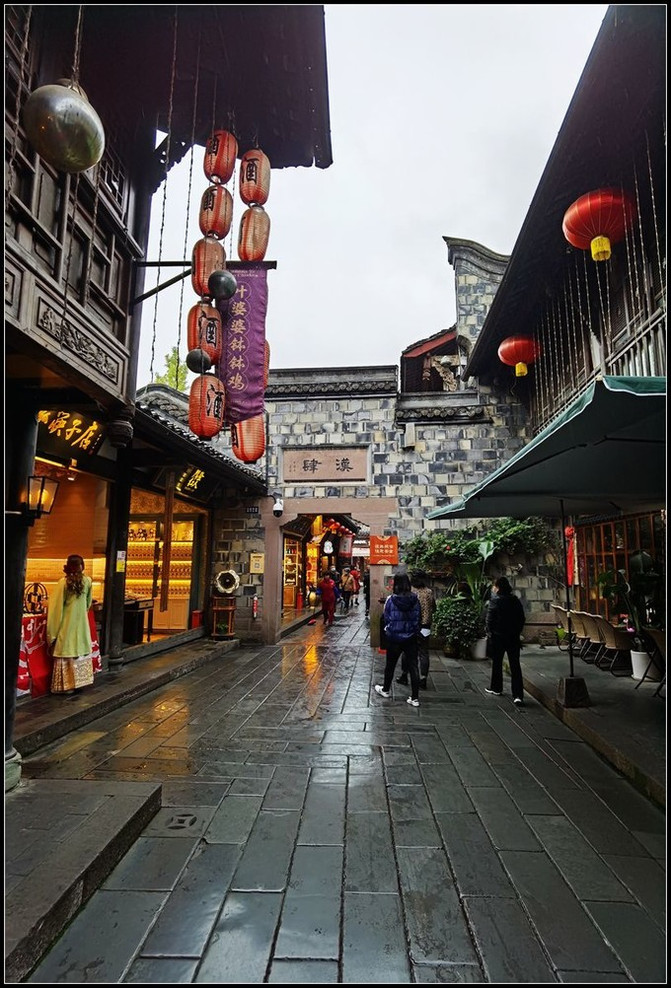

The antique Jinli Ancient Street and the comfortable and comfortable living style are the representative of Chengdu's life and culture and the pride of Chengdu people.

After the 7-day leisure tour in Sichuan, I returned to Guangzhou on China Southern Airlines flight.
Previous Article:Qionglai, a handcrafted experience around Chengdu
